This inner-knowing helps you to develop a skill set that enhances your ability to engage in positive ways with people, build meaningful relationships and navigate tricky social situations.
Subsequently, developing emotional intelligence can have a positive impact on many aspects of your life; personal relationships, career success, and overall well-being.
EI also helps you to better understand and regulate your own emotions and to communicate how you feel more effectively to others.
Self-awareness is the ability to recognise and understand one’s own thoughts, feelings, and behaviours. It involves a deep understanding of your personality, strengths, weaknesses, and values.
More importantly, self-awareness involves understanding how your thoughts, feelings and behaviours impact the experiences you have in life — and the thoughts, behaviours and feelings of others. This helps to improve your relationships and be more empathetic towards others.
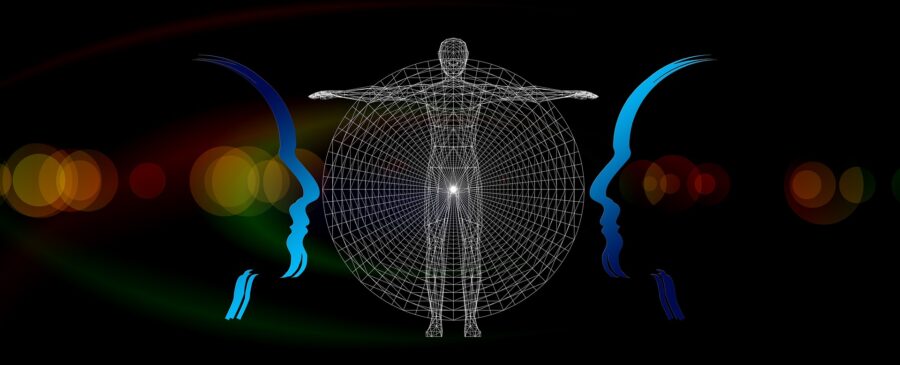
When you recognise how you are creating your experiences in life, you are in a better position to change thoughts, actions and emotions that are not working for you. And likewise, continue with thoughts, actions and emotions that are producing the goods.
Self-awareness can be developed through various means, such as introspection, meditation, and feedback from others. You can also use the following tools in the Master Mind Content Essential Self-Development Program:
Self-awareness helps you to make better decisions, and recognise your limitations — but in doing so, identify potential areas for growth which can lead to personal and professional development.
The ability to regulate your emotions and impulses enables you to respond to stressful situations more effectively, communicate clearly, make better decisions, and give you a greater sense of overall well-being.

Self-regulation involves observing your thoughts, emotions, and behaviours in a mindful way that is adaptive and constructive. Doing so gives you the capacity to monitor and control your impulses, resist temptation, and manage your emotional reactions in a healthy and productive way.
The capacity for self-regulation equips you with a calmness that enables you to respond to situations without panicking. Even in stressful situations when your inner turmoil is threatening to overwhelm you.
Self-regulation can be developed through various means using the tools in the Essential Self-Development Program:
Emotional intelligence can have positive outcomes on how motivated you feel. Individuals with high emotional intelligence are able to create a sense of purpose and motivation in their lives that goes beyond external rewards or incentives.
One of the key ways in which EI influences motivation is through self-awareness. Individuals who are self-aware are better equipped to identify strengths, weaknesses, and values, which help to determine goals and aspirations that are meaningful.

You will also be better able to recognise and manage your emotions, stay focused and committed to your goals, face challenges head-on and even bounce back quickly after a setback.
You can develop motivation by using the following tools in the Essential Self-Development Program:
Empathy is the ability to understand and share the feelings and perspectives of others. It involves putting oneself in someone else’s shoes and trying to see the world from their point of view. It has a significant role in building strong, healthy relationships.
People who are cut off from their emotions would be wise to practice and develop empathy. You can do this by active listening. Listen to what other people say and take the time to understand their point of view. Try to understand how and why they feel a certain way, and try to relate their perspectives and experiences to your own.
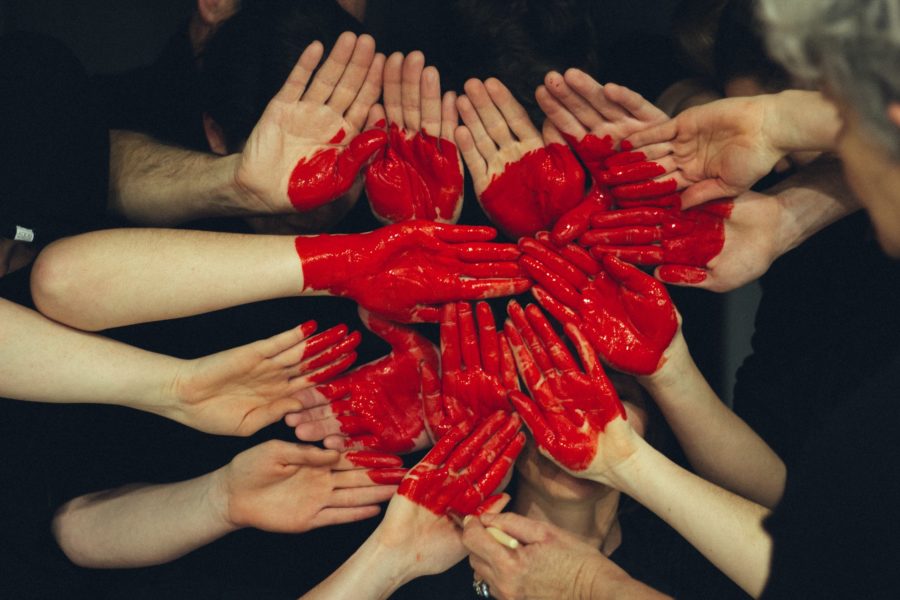
Empathy is essentially another source of motivation. When you are able to recognise and understand the emotions and perspectives of others — and yourself — you feel a greater sense of purpose and meaning which strengthens your connection to the world around you.
When you develop this state of mind, you find that you are inspired to take appropriate action which can make a positive difference in your life and the lives of others. Empathy enables you to relate to others, communicate effectively, resolve conflicts, and build trust and rapport.
The following tools in the Essential Self-Development Program can help you to develop empathy:
Emotional intelligence is an important skill for social and professional environments. Master your emotions and you will be an effective leader.
People with well-defined EI are able to communicate effectively and clearly with others. They are able to express their own thoughts and feelings in a way that is respectful and constructive, while also being able to listen actively and respond empathetically to the needs and perspectives of others.
Developing emotional intelligence enables you to navigate conflicts and disagreements in a constructive and productive manner. With your emotions in check, you are able to find mutually beneficial solutions.
EI is also associated with being a good team player. You are happy to collaborate on projects and help to create a positive and supportive environment. You’re also able to provide and receive constructive feedback.
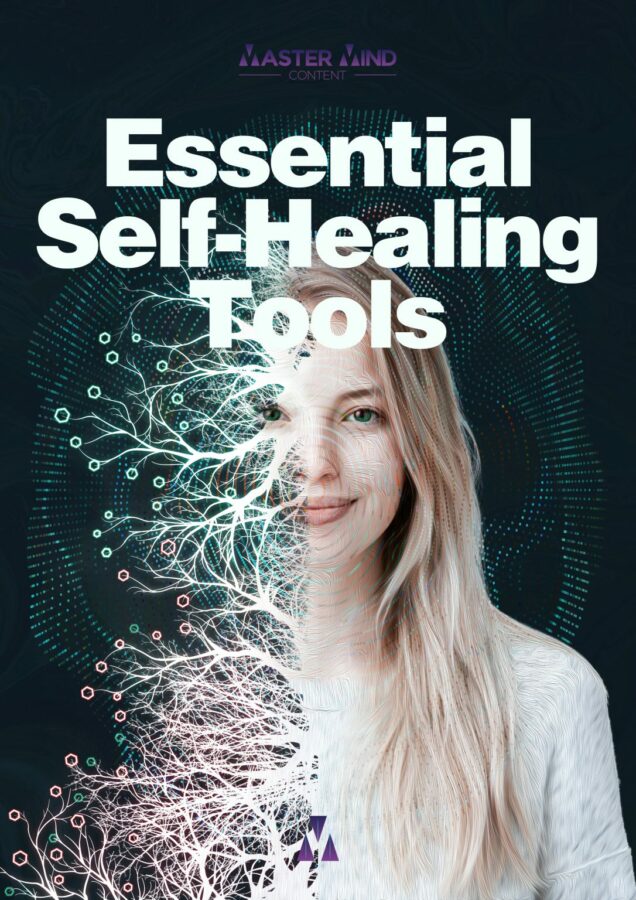
Over time, the body and mind can develop a tolerance to coping habits, meaning that people need to engage in the behaviour more often or for longer periods of time to achieve the same level of relief. This can lead to an addiction as people continue to increase the frequency and intensity of their coping behaviour.
Addiction is a form of codependence. They arise in circumstances where the ego does not have a program to cope with the outside world. To alleviate the stress and discomfort the void left by the Self is taken up by a coping mechanism.
Thought-Provoking Quote
“The further assumption is applied that cognition is a coping, instrumental mechanism, and that it must to some extent be egocentric. It assumes that the world can be seen only from the vantage point of the interests of the perceiver and that the experience must be organised around the ego as a centering and determining point.” [1] ~ Abraham Maslow: Toward A Psychology Of Being
Addictions are also the ego’s way of nurturing your emotional well-being. The ego’s role is to help you to survive the day, both physically and emotionally. But when you rely on a certain behaviour to feel better you are masking the real problem.
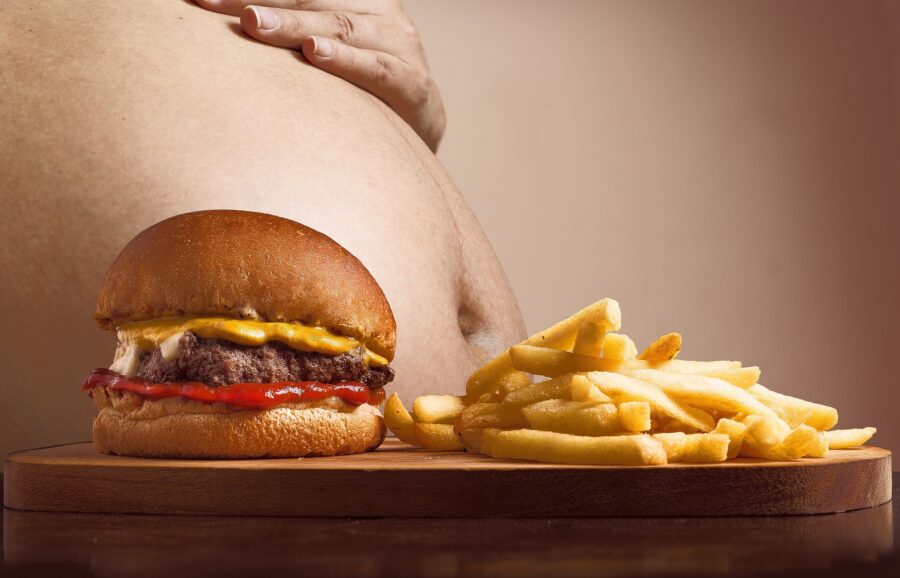
Codependence arises from feelings of being unworthy, ashamed or guilty. These symptoms can emerge in early childhood from a lack of emotional support and can be enforced by someone else (typically a parent or teacher) projecting their own feelings of shame and unworthiness onto their child.
Unconscious feelings of guilt, shame and unworthiness are common themes in people with chronic addictions. [2] The cycle continues to repeat itself until you understand the underlying cause and motivation behind your craving – and put a strategy in place to reprogram your subconscious mind.
Coping habits can have negative consequences, such as social isolation, financial problems, or physical health issues. Despite these negative consequences, people may continue to engage in the behaviour rather than accepting they have a problem.
Addiction is a particular problem for people that have a dominant Lover archetype. This energy binds you to things in the material world. Although the binding process starts out as mild behaviours, coping mechanisms quickly become a habit the ego associates with as an effective method of emotional survival. [3]
Coping habits can also surface due to underlying psychological factors, such as low self-esteem, anxiety and depression.
The addict in denial lives in a world of fantasy and illusion which is controlled by the ingrained belief they need a particular substance before they can function properly.

We should differentiate between addictions and habits here. Let’s take coffee or tea as an example. Most of us will say we can’t function until we’ve had a cup of tea or coffee in the morning.
Whilst this is probably a limiting belief for most people, once you get into your groove you go about your day as usual. That morning tea or coffee is simply a morning ritual you have grown accustomed to.
This is a binding process of the healthy Lover, but you have your needs and desires under control. Your morning ritual is a means of restoring order to a new day after the chaos of sleep. The mind returns from the chaos of the unconscious to the order of the conscious awareness
An addiction, on the other hand, is if you drink more than 4 or 5 cups of tea or coffee a day because you don’t feel as though you’re functioning properly. It is when self-delusion surfaces that you must guard against a habit becoming an addiction. It’s usually quite easy to identify denial and self-delusion.
[1] Abraham Maslow: Toward A Psychology Of Being, p.71 Kindle Loc 1403 (1962)
[2] Shame: The Core of Addiction and Codependency; Darlene Lancer (2021)
[3] E.F. Dubow, M. Rubinlicht, in Encyclopedia of Adolescence, (2011)
Do you find yourself making excuses not to do something? Do you avoid social situations or not allow yourself to relax and enjoy social events if you do go?
This avoidant nature could be a fear of criticism. [1]
Criticism used to come up to me a lot in my life. It made me defensive, avoidant and irritable. I would ruminate over conversations and, basically, wind myself up all over again.
Criticism can be hard to take. However, it’s only hard to take if you lack self-esteem and have a fragile self-image. This is common in people that carry anxiety.
Fortunately, I developed effective strategies that enabled me to deal with criticism. They are essentially mindset strategies, but building confidence and self-esteem plays a key role as well.
If you’re living with anxiety and depression, developing an inner sense of security is something you should be doing.

But despite overcoming anxiety and depression, criticism continued to surface from the unconscious quite frequently. An imaginary role-play would play out in my head in which I was having to defend myself in a courtroom before a judge.
Fortunately, I’ve got more control over the fear of criticism and don’t let it hold me back so much. Although I still have my moments (thanks to social media).
But up until about a couple of years ago, I had criticism anxiety. And that prevented me from getting to where I was to where I wanted to be.
I simply didn’t even try to move forward and kept making excuses why I couldn’t. And none of the excuses was an admission of fear, by the way.
Fear of criticism, or “criticism anxiety” is an irrational and excessive fear of being judged, evaluated, or criticised by others. People who have this fear may feel extremely anxious, insecure, and vulnerable when they receive criticism or negative feedback, even if it is constructive or well-intentioned.
The fear of criticism can lead to a number of negative consequences, such as avoidance of social situations, difficulty expressing oneself, low self-esteem, and feelings of isolation and loneliness.
It can also hinder personal and professional growth, as individuals may avoid taking risks or trying new things in order to avoid potential criticism. It can even invite depressive moods and insomnia. [2]
The toxic nature of social media — and mainstream media in general — can enhance criticism anxiety. It seems increasingly more difficult to share thoughts and opinions without receiving criticism or negative feedback.

Like many of us, I used to find criticism challenging. Now I realise that you can’t please everyone because we see the world in different ways. Our opinions can only be based on the information we have been exposed to. When you are confronted with an audience as large and diverse as social media platforms, it will naturally throw up a variety of opinions.
That doesn’t excuse social media users from being rude and mainstream media from being ignorant. But that’s another matter.
And if you’re posting hurtful and aggressive comments on social media anonymously, you’ve got a serious problem you should take a look at. It’s not other people you hate, it’s yourself.
And that’s sad.
Fear of criticism can also develop into avoidant personality disorder (AVPD). This condition is characterised by a hypersensitivity to criticism or rejection which prompts pervasive patterns of social inhibition.
People with AVPD often have low self-esteem which causes difficulty forming close relationships. They often feel inadequate or inferior to others and confess to being socially incompetent.
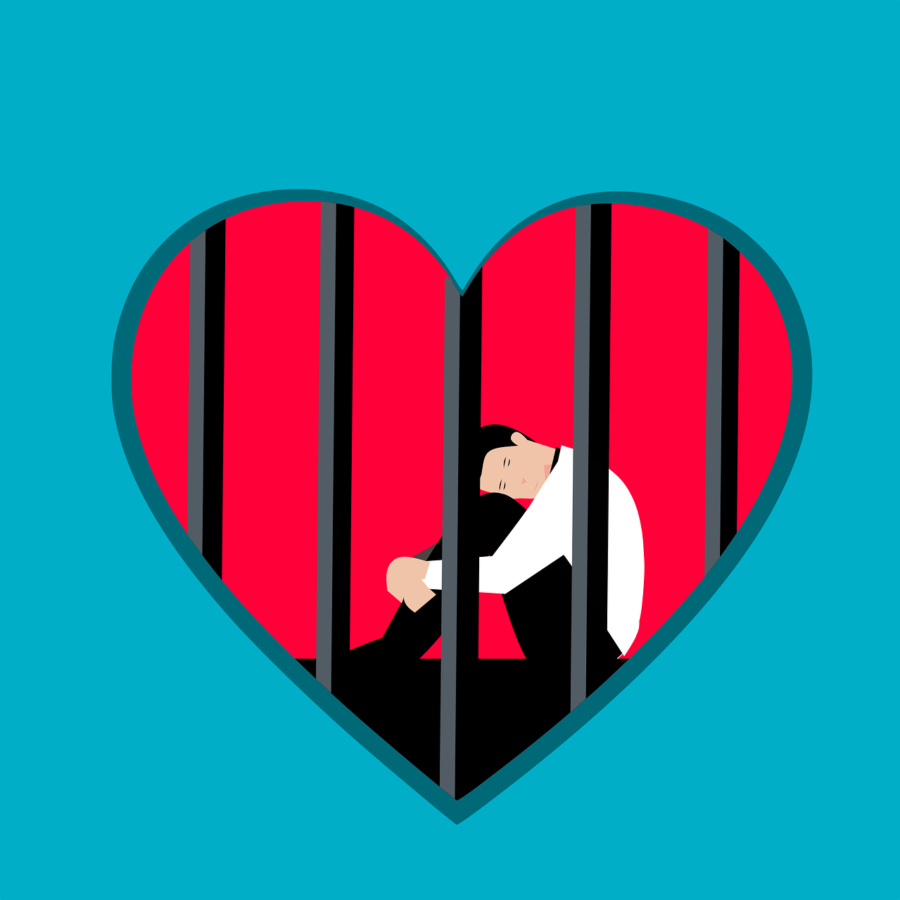
The overriding fear of AVPD is being ridiculed, humiliated disliked, rejected, embarrassed or unappealing. They are often reluctant to talk about themselves or reveal their likes and interests for fear they will be mocked or have their opinion shot down. [3]
They may also worry that their social incompetence will make them feel like a fool. So to avoid negative experiences, they avoid situations that potentially invite negative feelings. [4] Ibid
The psychological causes of criticism anxiety can be complex and multifaceted. Most people will develop pain towards criticism in early childhood, but criticism anxiety can emerge at any point in a person’s life if their self-esteem becomes eroded.
When a person is criticised often enough, rejection and feelings of inadequacy can create a sense of vulnerability and low self-esteem. You can easily see how the school system instils criticism anxiety in the population from the age of six.
Social conditioning and cultural expectations can influence how individuals perceive criticism and feedback. Negative thinking patterns, such as perfectionism, can make individuals more susceptible to criticism anxiety.
These biases can create a sense of pressure to perform perfectly and can cause individuals to view feedback as a personal attack rather than an opportunity for growth.
Children that develop criticism disorders naturally become defensive when they are mocked and humiliated by their peers — particularly in adolescence when young adults are becoming more conscious of their self-image.

The experience of rejection can also make people feel marginalised. This is accentuated in children that were emotionally neglected during their early years. Abandonment issues will persist until they are addressed.
The fear of criticism is associated with the Creator archetype — also known as the artist. In the archetypal world, as in the real world, open themselves up to criticism.
When a fear of criticism prevents you from moving forward you are not creating anything in your life other than stagnation. The flow of life comes to a standstill.
Stagnation, or the lack of growth or progress, can have a negative impact on your mental health. Feelings of worthlessness escalate when you feel as though you are not making progress towards your goals or living up to your potential.
As you will learn in the Master Mind Content Anxiety & Depression Program, a lack of self-worth is a major contributor to anxiety and depression. The feeling of worthlessness is amplified if you don’t have purpose and meaning in your life.

Criticism anxiety developed in childhood is, therefore, a precursor to debilitating anxiety and depression in adults. I first noticed my anxiety at 14 (although didn’t know it was anxiety at the time). The likelihood is that anxiety had been lurking underneath for several years before it made itself known on the surface.
Anxiety is a warning sign that you are not developing a conscious personality that is healthy, vibrant and enjoying life. Anxiety shows you that you are afraid to live because you don’t know how to live.
Developing your Creator archetype can help you to overcome the fear of criticism — and in doing build confidence and develop your lack of self-worth.
How you handle criticism from the external world is all a matter of mindset. If you are prone to self-criticism, that’s an entirely different address altogether, which I will come on to in the next section.
Here are several mindset strategies that you can use to overcome the fear of criticism and move forward with confidence:
Not all criticism is justified. Sometimes people criticise others because they want to cause emotional pain. But all they are doing is projecting their pain onto you. Ignore hurtful criticism and see it for what it is — a reflection of the criticiser’s own weaknesses. Feel compassion for the purpose, not pain.
Other times, criticism is invalid, unnecessary and disrespectful. Again, this can be a projection but is often due to ignorance. As Carl Jung pointed out, some people base their opinions on judgements they haven’t internalised and thought through. Opinions are largely based on information we absorb from our environment. [5]

Then there are other times when the criticism is valid. In these circumstances, use criticism as fuel to learn and grow. Which could be as simple as chaining your attitude or mindset towards something. Pretty much as I am describing in this section.
Let me put it this way, if you are being triggered by criticism you receive on social media, you’re doing yourself more emotional harm than the other person is probably intending to. They are either weak-minded, wounded or need educating in the art of diplomacy and communication.
A simple mindset change will protect you from feeling hurt, but can also help you to learn and grow. So evaluate whether the criticism is justified and choose who you are prepared to accept constructive criticism from.
The reframing tool in the Master Mind Content Anxiety & Development Program can be a useful strategy to overcome a fear of criticism. As mentioned above, viewing criticism as an opportunity to receive feedback and improve can have positive outcomes. But also recognising that other people may be projecting prevents you from taking criticism personally.
When you know your Truth, you are clear on what is important to you, what you believe is right, and what you want to achieve. Keep faith in your Truth and focus on your values and goals. When you can do this, criticism becomes less important.
Don’t let fear of criticism hold you back from taking action towards your goals. Take small steps, and don’t be afraid to make mistakes or face criticism. The mindset strategies above will help with that. Plus, the more you practice something, the better you get. Then you start receiving praise.
Whether you made a mistake or you’re habitually self-critical, try not to be too hard on yourself. First of all, it’s okay to make mistakes. Secondly, making mistakes gives us the opportunity to grow.
As Thomas Edison noted when during his quest to make the light bulb:
“I have not failed 10,000 times—I’ve successfully found 10,000 ways that will not work.”
~ Thomas Edison
If you do make a mistake, treat yourself with the same compassion and understanding you would give to a friend. Don’t allow your superego to indulge in negative talk.
It’s also important to note that self-compassion is not about being self-indulgent and blindly positive to dismissive of criticism. Self-compassion involves treating yourself with respect—the same respect you would show to a friend without a second moments thought.
If you can do this for a friend, why not do it for yourself?
If you are self-critical, there could be another reason. Self-criticism may not simply be a “habit” you have picked up from your parents or “inherited in your genes.”
Let’s go back to my mental role-play. The judge.
When I was under the control of my inner critic, it would always be a judge I was appealing to. Ultimately, this is an archetypal fantasy showing me that I am not in control of my own destiny because I am allowing the fear of criticism to hold me back.
Fear of criticism puts your future in jeopardy. A judge in real life, after all, is the decision maker that has control over somebody’s future. For me, the courtroom would be a scary place to be.
A judge is also an authority figure, which in archetypal terms relates to the Ruler. The Ruler can be hypercritical — just like Sigmund Freud’s superego. In Freud’s model of the psyche, the Superego comes into conscious awareness.

And sure enough, the Ruler is the Self-ego axis. Another way of looking at the judge is self-criticism. The Self is not happy with the choices the ego has been making — which also means the ego has power over the Self.
It should be the other way around. When you allow your ego to make all your life choices, the unconscious aspect of your nature, will in Jung’s words “rebel”.
An archetype in rebellion can be problematic.
“There is an autonomous inner directiveness, separate from the ego and often antagonistic to it. Such an awareness is sometimes releasing and sometimes exceedingly burdensome.” [6]
~ Edward Edinger, Ego and Archetype
I later adapted this scene to a role-play I had more control over. Or more precisely, my unconscious brought up a new scenario for me to consider.
In this new scenario, I am being interviewed by a mainstream media journalist who is criticising my view of the world. Alongside her is an “expert” condemning my ideas.
But as the conversation goes on — through active imagination — I recognise that the “expert” does not have any ideas of their own and their worldview is narrow.
This is my Creator archetype informing me to stay true to what I believe and not to be persuaded by other people’s opinions or criticism. When you know your own Truth, it is easy to accept that other people are entitled to their opinion, simply because they see the world from a different perspective.
And that’s what the fear of criticism essentially boils down to. It’s your perception of what other people think of you and your opinions.
Never take criticism personally. At least try not to. Adopt the mindset that all criticism is an opportunity to improve yourself or broaden your perspective on a topic.
Otherwise, criticism is merely a projection or a matter of opinion. Neither is worth getting upset over.
Your only consideration should be who you choose to accept criticism from. And if the Self is the criticising agent, take a close look at whether the life choices you are making are in the best interests of your health or helping you to move positively towards your intention.
I have first-hand experience in overcoming anxiety, depression and a fear of criticism and want to share the tools I developed with you. The Master Mind Content Anxiety & Depression Program helps you to identify archetypes and determine which energies you are ignoring. These tools enable you to successfully emerge feeling stronger, positive and at peace with yourself.
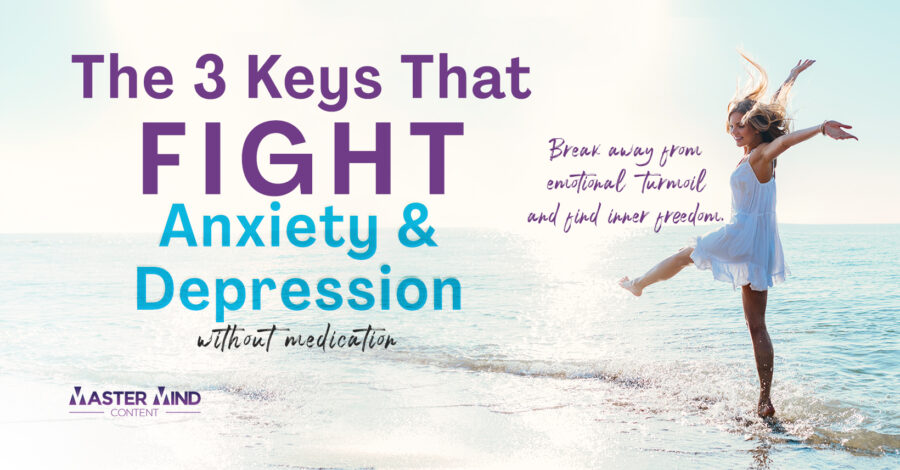
[1] Avoidant Personality Disorder — ScienceDirect
[3] Avoidant Personality Disorder, Mark Zimmerman, MSD Manual (2022)
[4] Ibid
[5] Carl Jung, CW6, Psychological Types, p.453, (1923)
[6] Edward Edinger, Ego and Archetype, p.97 (1992)
“We are seeing the emergence of a new image of the psyche, and with it an extraordinary worldview that combines breakthroughs at the cutting edge of science with the wisdom of the most ancient societies [1].…Up to now, Newtonian science has been responsible for creating a very limited view of human beings and their potentials.” [2]
~ Stanislav Grof, The Holotropic Universe
The discussion of consciousness is troublesome.
Academia calls it the “The Hard Problem”.
Oh yeah, it’s that troubling. But that’s only because consciousness can’t be measured. And scientists love to measure shit.
Not only is consciousness unmeasurable but by its very nature, nature is complex.
But here’s the good news: consciousness is observable. You can see it in the thoughts, emotions and behaviours you experience every day.
Yeah, that consciousness.
But the hard problem seems to be, where does consciousness originate from and how does it influence our thoughts, actions and emotions?
I’ve had a crack at explaining why in the following content. I seek to explain:
Strap in.

A neuroscientist once told me: “The collective unconscious doesn’t exist”. I didn’t bother to convince him otherwise. At the time, I didn’t have enough knowledge or evidence to debate his opinion with any real vigour.
But deep down, I knew it was there. I had experienced it. I had felt it!
The opinion of the neuroscientist in question was straight out of the mechanistic Newtonian science Stanislav Grof speaks of in the leading quote. By the very nature of his job, the neuroscientist had seen the brain at work through neuroimaging.
The technical behaviour of the brain cannot be questioned.
But dogma can shape a person’s worldview.
It would appear that Newtonian-Cartesian science is turning out to be a pile of old dogma academia is refusing to shake off their shoes.
Fortunately, open-minded researchers are taking the opportunity to peer into the quantum world with great gusto. And the mechanics of the universe are throwing up all kinds of questions to which scientific dogma has a scant response.

Consciousness has been slid under the microscope.
Thought leaders in the field of consciousness research are challenging established views — together with neuroscientists and their fancy technology. Because it turns out, that consciousness does not originate in the brain.
So, where does consciousness originate from?
Consciousness is regarded as: “Internal knowledge or conviction; the state or fact of being mentally conscious or aware of something”. [3] It plays a lead role in how we view the world, interpret reality and interact with our environment.
But that description is more befitting of conscious awareness. Consciousness as a whole has a much broader meaning — because our conscious awareness is influenced by our personal unconscious and the collective unconscious.
One of the key ways in which consciousness shapes our worldview is by influencing our beliefs and attitudes and how we respond to the information that we receive from our environment.
For example, someone with a strong sense of self-awareness may be more open-minded and receptive to new ideas. On the other hand, someone with concrete beliefs is generally closed off to outside opinion and more inclined to resist, alternative ideas or new experiences.

Or someone who has strong opinions and is highly conscious of their biases and prejudices will accept information that reinforces their beliefs but will be more critical of the information that runs contrary to ingrained biases.
Meanwhile, someone who is less self-aware may be more likely to accept information at face value without questioning its validity, accuracy or relevance.
How consciousness shapes our worldview does not have many grey areas. Until that is, you start discussing the origins of consciousness and what it actually is.
This is when the room becomes divided in the halls of academia. World views are at stake.
Shall we examine what we do know?
The established view is that consciousness emerges in our brains when our sensory organs receive information from our environment.
Information taken from our learned experiences is then stored in “mental memory banks” which we can access. At least sometimes. Many of the experiences and information absorbed by our senses are often blurred, skewed or forgotten.
Sometimes, the information doesn’t even make it into the memory banks at all. This is what Sigmund Freud called ‘repression’.
Freud’s view of the unconscious is another established protocol. Psychologists estimate that between 90-95% of the decisions we make every day are unconscious — that’s to say they are stored in the “subconscious”.
N.B. Psychologists use the terms unconscious and subconscious interchangeably. They essentially mean the same thing, even though, in my opinion, they shouldn’t. The subconscious and the unconscious have two different functions which are beyond the scope of the article, but you can read about them in the article: Subconscious v Superconscious: What’s The Difference?
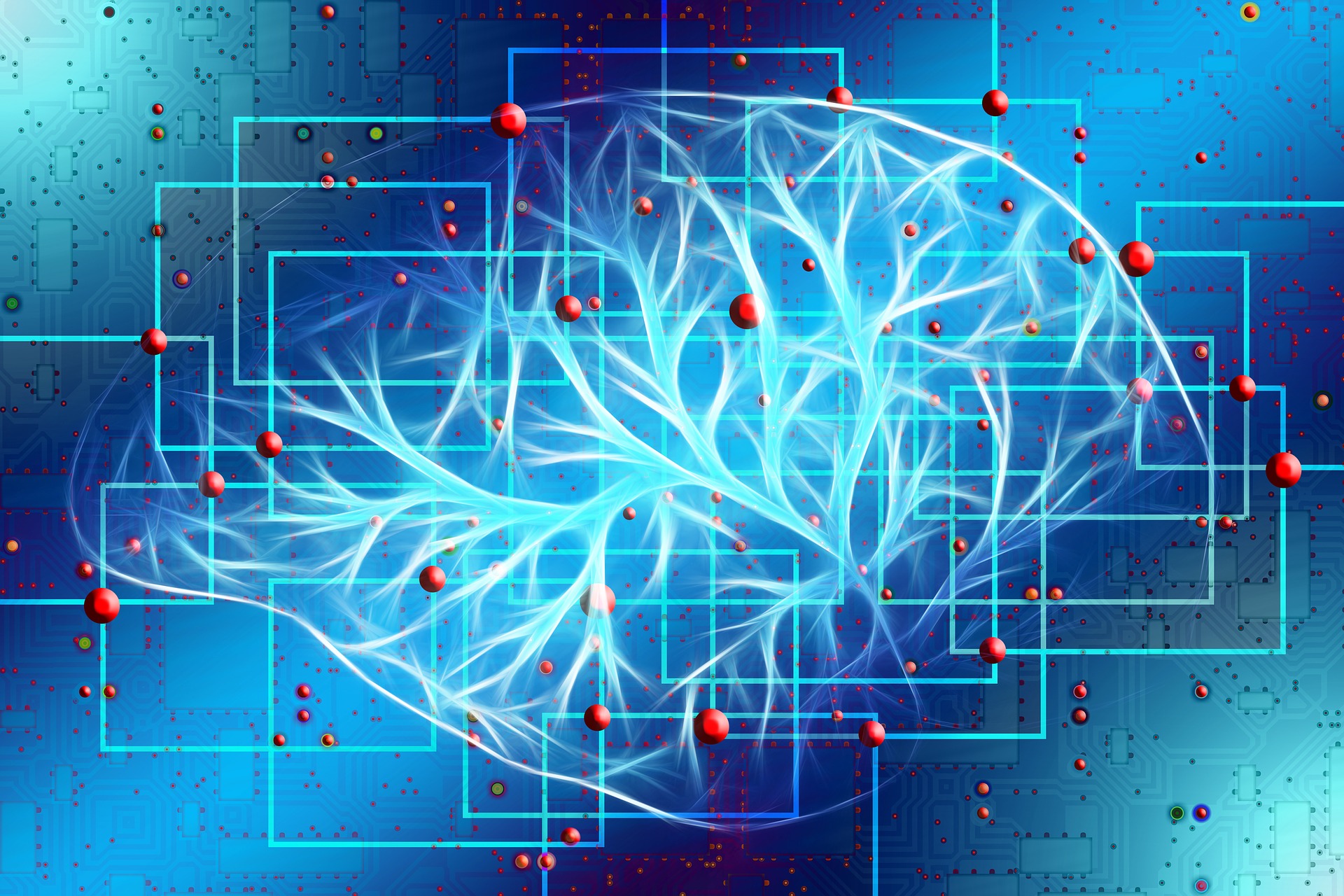
Ordinarily, memories that are stored in the subconscious emerge into conscious awareness every day or fairly frequently. We make a decision based on that information. Our habitual nature is the result of stored memories.
Master Mind Content calls this function of Mind, subconscious programs.
We can also access some memories from our past. They may not be in conscious awareness every day but are either triggered by something in the environment or a nostalgic conversation. Other times they pop up randomly.
The function of the psyche is what Jung calls the personal unconscious. They are memories that are created in our past and shape our personality, relationships and view of the world; the types of memories that probably contribute to our subconscious programs.
We also store information from our past that we are totally unconscious of. However, depth psychology and other techniques like meditation and hypnosis have shown that unconscious content can be made available to the conscious mind.
Sigmund Freud called this process repression. When information taken from the environment is “repressed”, some part of the experience is “cut off” from conscious awareness. The information doesn’t make it into the memory banks.
And this is where Newtonian physics falls down in the consciousness conversation. If the nervous system only processes the information it accepts and doesn’t build a synapse for information it rejects, what happens to the split-off consciousness and the energy it drives?
According to Wilhelm Reich, amongst others, repressed consciousness takes on a life of its own and creates a conflict.
Thought-Provoking Quote
“In a patient where part of the personality had failed to go along with the total development toward adulthood, thus remaining in the earlier stage of sexual development. This results in ‘fixation.’ What happens then is this isolated part came into conflict with the remainder of the ego, by which it was held in repression.” [4]
~ Wilhelm Reich, The Function of the Orgasm
This means that unconscious content continues to have an influence on our behaviours — we just don’t know why we do the dumb shit.
This is why psychologists estimate that around 90-95% of the decisions we make every day are unconscious.
For this reason, Master Mind Content include “fixations” as habitual patterns of behaviour and this is a subconscious program the ego identifies with even if you don’t realise why you doing it.

It is this part of our programming that lies behind our destructive habits and behaviours.
This theory contradicts established science that has persisted with the idea that our behaviours are determined by our genes. And the theory is backed by mechanical science that can be measured.
Let’s have a little look at epigenetics. This relatively new field of science is also casting doubt on the old paradigms.
It has been a long-held theory that our behaviours and illnesses are influenced by genetics.
In the last thirty years or so, biologists in the field of epigenetics have found evidence to the contrary. Academia is slowly coming around to accepting this revelation.
They are not helped by the fact that no one has discovered and proven that a single gene is responsible for a specific action.
Epigenetics also supports the theories presented by those pesky consciousness researchers who are hell-bent on destroying another scientific dogma.
One consciousness researcher asks:
Thought-Provoking Quote
“Are genes alone sufficient? Or does development depend on nonmaterial organising principles as well?” [5]
~ Rupert Sheldrake, The Presence of the Past
Epigeneticists show that established theory should be reconsidered when conflicting evidence emerges. History shows that new ideas get shut down. The pig-headed ignorance of academia is pissing off groundbreaking “pseudo-scientists”.
So what’s the new story on genes?
Our cells do play on role in how we behave, but their involvement appears to be mechanical rather than causal. How genes function is determined by the information taken from the environment, processed and stored in said cells.
That is to say, genes only determine our behaviour based on past experiences. And as Freud established, these experiences are stored in the subconscious.
Thought-Provoking Quote
“The part of the human brain that most define us is less a product of the genes with which you started life than of what life has thrown at you. Because it is the last to mature, by definition the frontal cortex is the brain region least constrained by genes and most sculpted by experience.” [6]
~ Robert Sapolsky, Behave: The Biology of Humans at Our Best and Worst
Genes are known to code information that is responsible for producing the proteins that keep us alive like transferring oxygen, pumping blood and digesting food. [7]
But genes don’t determine behaviour. How we react is largely determined by neurochemicals. For example, oxytocin elicits prosocial behaviour and makes us more charitable, Vasopressin enhances paternal behaviours, testosterone boosts impulsivity and risk-taking and so forth.
In other words, cells are programmed by neurotransmitters — chemical messengers that store the information collected by our sensory organs.
Thought-Provoking Quote
“Behaviour is the product of the nervous system, whose actions were shaped by sensory cues minutes to hours before, and how the brain’s sensitivity to those cues was shaped by the hormonal exposure in the preceding hours to days.” [8]
~ Robert Sapolsky, Behave: The Biology of Humans at Our Best and Worst
Let’s take a brief look at how the nervous system works. If you want to go deeper take a look at the article dedicated to the subject, How The Nervous System Works.
Ordinarily, the nervous system is responsible for coordinating and controlling all bodily functions and movements. It is the body’s communication network, transmitting signals between different parts of the body and between the body and the external environment.
But it also plays a role in how we absorb information from the environment and how we subsequently respond to that information through thoughts, emotions and actions.
We take information from our environment through our five senses. The information collected by the senses is processed by cells in the nervous system and rocketed up to the brain.
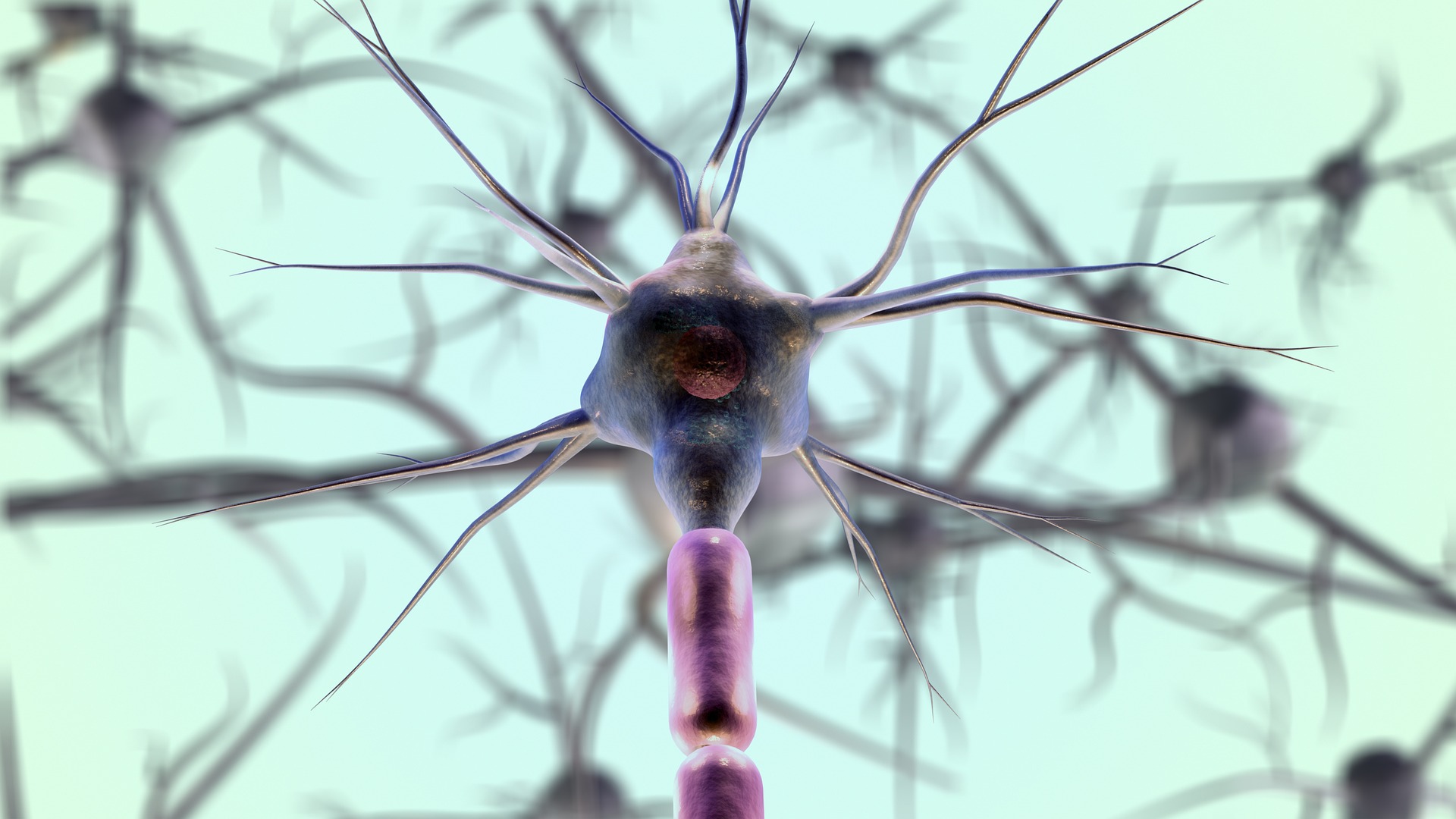
When the information reaches the brain a neurone is fired and a synapse is formed. But before hitting the synapse, a neurotransmitter is released in the pre-synaptic gap. This chemical discharge stimulates an emotion that influences how we feel and behave.
The nervous system consists of two main parts: the central nervous system (CNS), which includes the brain and spinal cord, and the peripheral nervous system (PNS), which includes all the nerves that extend throughout the body.
The CNS is responsible for receiving and processing information from the senses, making decisions, and sending out commands to the PNS to carry out actions. The PNS, in turn, transmits these commands to the muscles, organs, and glands to control their activity.
However, neurotransmitters and hormones are coded for by genes. [9] And there are multiple transcription factors in a cell, each binding to a particular DNA sequence and constituting a particular set of information. [10]
This is how the nervous system creates habits and defence mechanisms. Essentially, this is the habitual mind, or as we call it at Master Mind Content, subconscious programs.
So let’s get this clear. Subconscious programs are formed as a result of personal experiences.
However, we should not forget that our genes are also coded by parents and family ancestry — of which we are unconscious. But they can still affect how we think, feel and act.

So if some of our behaviour stems from genetic transmission, that may mean the motivation behind some of our behaviours is unconscious.
However, epigenetics shows that genes adapt to our environment. That means that behaviours we are coded with through DNA or through experience can change if the information from the environment is contrary to the information in the cell.
This is why many people do not behave exactly like their parents as adults. Most of us develop a personality that is influenced by our peers more than by our parents.
New cells created during neurogenesis can store fresh information which gives rise to the potential for new behaviours, emotions, ideas, attitudes, beliefs and perceptions.
“Most anything you can measure in the nervous system can change in response to a sustained stimulus. And importantly, these changes are often reversible in a different environment.” [11]
~ Robert Sapolsky, Behave: The Biology of Humans at Our Best and Worst
When new information from our environment is received, a new dendritic spine emerges followed by an axon terminal. Within a couple of weeks, the synapse is able to function and stabilise the new memory.
But only if the experience is repeated often enough. The sensory organs have to repeatedly take in the same information for processing before a memory — or subconscious program — is stored.
The forming of memories doesn’t actually require a new synapse, it requires the strengthening of pre-existing synapses that are reinforced over time.
This is why we have to fight habitual behaviours. It’s also important to remember when confronted with the challenge of changing habits. Neuroscientists say what is fired becomes wired.
But the essential “wiring” of the nervous system relies on the cooperation of existing genes. Information that is already stored in the nervous system can determine whether new information is passed further along the line or not.
That means the existing information stored in genes takes precedence in determining the action potential. And because memories are emotionally charged they have more force.
On top of that, we have the battle between the intellect vs instinct to contend with. The intellect is the ego — and the ego responds to subconscious programs.
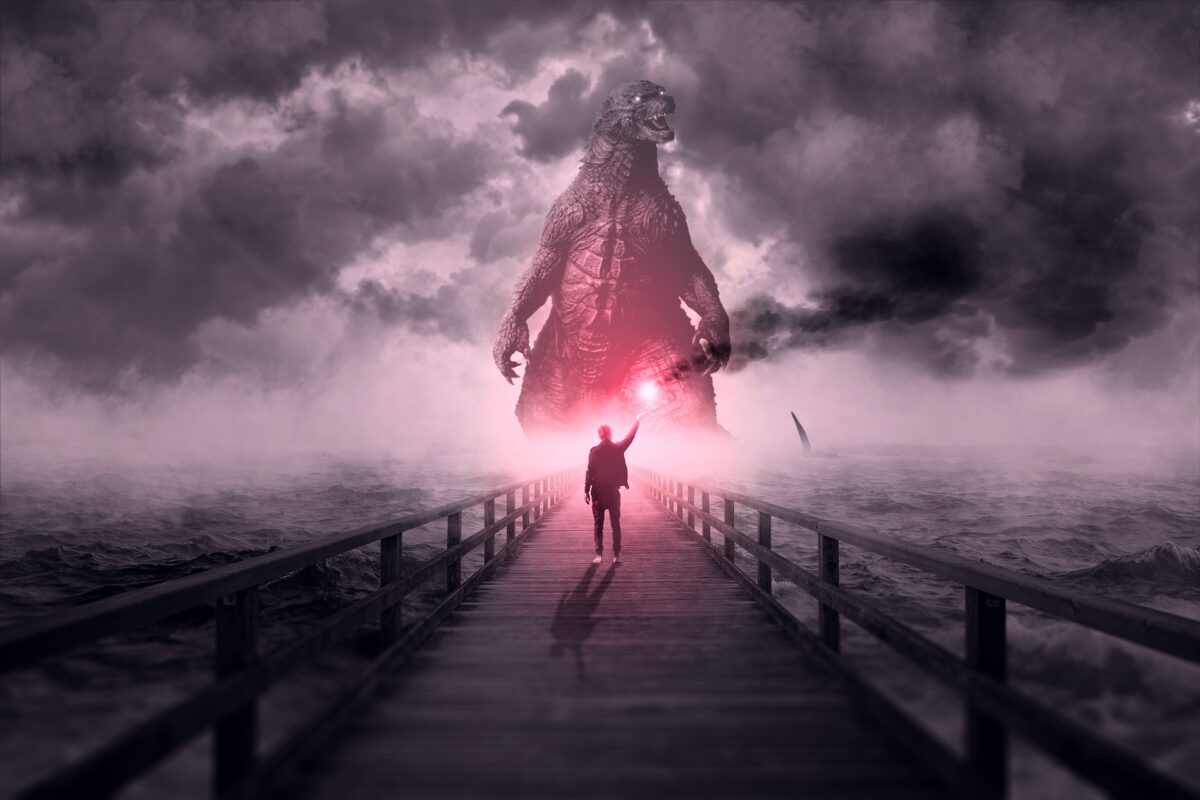
So this is how habits are formed — and why they’re so difficult to break. The emotional pull is more often than not the determining factor in the course of action we take — which in turn influences our thinking.
Does this sound familiar: “I know it’s not good for me, but I need it. It’ll make me feel better.”
Habits do make us feel better because they were designed as survival mechanisms. However, they only offer short-term relief. At some point in the day, or week, the ego is aware that it needs its dose of emotional well-being.
Many of our childhood experiences stored as subconscious programs determine our behaviour. This can either be because we’ve always done it that way, we know we like something, or, as described above we think we need something to get us through the day.
But we are also influenced by unknown subterranean forces. For example, one day we might get angry at something and on another day, we don’t get angry at the same thing.
Consciousness is complex.
Ultimately, consciousness impacts the relationships and experiences we have with our peers and objects in the environment. All these experiences either reinforce existing subconscious programs or create a new synapse which has an alternative outcome potential.
Thought-Provoking Quote
“The environment serves as a “contractor” who reads and engages those genetic blueprints and is ultimately responsible for the character of a cell’s life. It is a single cell’s “awareness” of the environment that primarily sets into motion the mechanisms of life.” [12]
~ Bruce Lipton, Biology of Belief
The information from the environment that is stored in our cells is essentially energy and matter. Einstein showed that energy and matter are the same in his famous equation: E=mc2.
If a cell is matter and processes energy-carrying information from our environment, the action potential must be determined by the information processed in a cell. Over and over again.
In other words, a memory is charged with an emotional reaction. How we behave is determined by memories stored in the subconscious mind.
This means the nervous system is the habitual mind — the store of subconscious programs in the personal unconscious.
But what about the random thoughts we have no conscious experience of? Or how about moments of inspiration, creativity and imagination?
You have thoughts you have no experience of right?
Where are these impressions coming from if they are not programmed in the personal unconscious?
To answer this we must turn to Messrs Feud and Jung.
It’s well established that retrieving repressed consciousness paves the path to healing and psychological development.
This idea was established over 100 years ago by Sigmund Freud, and, in my view, was later enhanced by Carl Jung. I say ‘enhanced’ because Jung had a slightly different perspective to Freud. The Swiss didn’t think that consciousness was limited to personal experience.
Thought-Provoking Quote
“For Freud, accordingly, the unconscious is of an exclusively personal nature, although he was aware of its archaic and mythological thought forms. A more or less superficial layer of the unconscious is undoubtedly personal. I [Jung] call it the personal unconscious. But this personal unconscious rests upon a deeper layer, which does not derive from personal experience and is not a personal acquisition but inborn. This deeper layer I call the collective unconscious. I have chosen the term “collective” because this part of the unconscious is not individual but universal; in contrast to the personal psyche, it has contents and modes of behaviour that are more or less the same everywhere and in all individuals. It is, in other words, identical in all men and thus constitutes a common psychic substrate of a suprapersonal nature which is present in every one of us.” [13]
~ Carl Jung: Vol.9 Part 1, The Archetypes and the Collective Unconscious
Jung’s theory of the collective unconscious clearly divides opinion. Some people simply can’t get their heads around it; mechanistic-reductionist people.
I once had a conversation with a girl who was a recently qualified psychologist. I brought Jung into the conversation and she was completely perplexed by what I was saying, so much so that she gave my friend a look to rescue her.
My friend is not a psychologist but he was educated enough about Jung to engage in a flexible conversation. Meanwhile, the qualified psychologist didn’t utter a word.

The point I was making was that Freud’s model of the psyche was incomplete. It relies solely on personal experience. Like the nervous system. I got the impression Jung’s ideas are not the view most newly qualified psychologists walk out of University with. The girl was polite and wanted to get into a debate.
Or maybe I’d shaken her world view and she didn’t know what to say. I have some Poseidon in me (which is not always a good thing).
Anyway, I digress. How can we explain behaviours that cannot be a result of past experiences?
What about the internal experiences that can’t be learned behaviours? Sometimes we just do things instinctively (and we’re surprised by ourselves!)
Or what about the vivid images in dreams and the mind’s eye? There is also a growing body of evidence coming from studies in psychic phenomena during non-ordinary states of consciousness. The results are quite remarkable.
Freud’s model of the psyche holds a significant amount of sway over the psychoanalytical profession today. That’s not to say Freud’s model is wrong. As I say, it’s incomplete. It only addresses aspects of consciousness that relate to personal experience.
N.B. We could argue that the “innate instincts” of the id share the same function as Jung’s archetypes in the collective unconscious, but that doesn’t appear to be an established view.
Even still, Jung says:
Thought-Provoking Quote
“Instincts are not vague and indefinite by nature but are specifically formed motive forces which, long before there is any consciousness, and in spite of any degree of consciousness later on, pursue their inherent goals. Consequently, they form very close analogies to the archetypes, so close, in fact, that there is good reason for supposing that the archetypes are the unconscious images of the instincts themselves, in other words, that they are patterns of instinctual behaviour.” [14]
~ Carl Jung: Vol.9 Part 1, The Archetypes and the Collective Unconscious
Jung’s model describes three sides of consciousness; conscious awareness, the personal unconscious and the collective unconscious.
Jung’s model of the psyche indicates the consciousness that emerges in our conscious minds cannot only be a product of a learned experience. The Swiss psychoanalyst believed there were psychic phenomena that were inherent and accessible to all human beings.
Thought-Provoking Quote
“The collective unconscious is a part of the psyche which can be negatively distinguished from a personal unconscious by the fact that it does not, like the latter, owe its existence to personal experience and consequently is not a personal acquisition. While the personal unconscious is made up essentially of contents which have at one time been conscious but which have disappeared from consciousness through having been forgotten or repressed, the contents of the collective unconscious have never been in consciousness, and therefore have never been individually acquired, but owe their existence exclusively to heredity. Whereas the personal unconscious consists for the most part of complexes, the content of the collective unconscious is made up essentially of archetypes.” [15]
~ Carl Jung: Vol.9 Part 1, The Archetypes and the Collective Unconscious
Academia argues that “heredity” is information stored in our genes and has simply been handed down through the generations of families by birth.
However, Jung based his opinion on the fact that a young patient of his had drawn symbols in a book from a culture she had no knowledge about. Nor had her parents.
The question is if the information that shows up in the form of images, peculiar thoughts, unique ideas, inspiration and imagination is not a learned experience accessible to conscious thought, where are these thought forms coming from?

How does a composer write a unique piece of music for example? How did Albert Einstein come up with the theory of relativity? How do we find solutions to problems?
There can only be two possible conclusions; past lives, an idea promulgated by world religions, or another source.
Could systems theory and morphic resonance provide us with an answer? Or is it just pseudo-science?
Today’s consciousness researchers are pushing the boundaries. The mysteries of the universe are unravelling in phenomena that should “drastically revise and expand the limited view of nature and dimension of the human psyche. [16]
David Bohm, a former colleague of Einstein, illustrates that energy, light, and matter are intertwined and cannot be extracted from the whole — the Universe, or “macrocosm”. [17]
Bohm notes:
Thought-Provoking Quote
“Relativity and quantum theory agree, in that they both imply the need to look on the world as an undivided whole, in which all parts of the universe, including the observer and his instruments, merge and unite in one totality.” [18]
~ David Bohm, Wholeness and the Implicate Order
Bohm believes the world we perceive through our senses and nervous systems represents a tiny fragment of reality in a much larger matrix. He proposes that everything we see, and don’t see around us is composed of interference patterns that carry information.
Energy and matter are essentially a microcosm that unfolds the macrocosm. And we’re all a part of the same interconnected source. As Carl Sagan said, and people keep saying, ‘We’re made of stardust.’
The Big Bang says so.
Thought-Provoking Quote
“As integral fields of the holomovement each of us is also a microcosm that reflects and contains the macrocosm.” [19]
~ Stanislav Grof, The Holotropic Universe
According to quantum field theory, there are a series of microscopic fields within matter which exist as quanta of vibratory energy. These vibrating energy fields integrate all material systems and actively shape everything that exists in the universe. [20]
Thought-Provoking Quote
“Vibrating electromagnetic fields underline the functioning of our brains and bodies, ourselves and our molecules. And all around us…All our lives go on within these fields.” [21]
~ Rupert Sheldrake, The Presence of the Past
Rupert Sheldrake is another thought leader in the academic community who has performed groundbreaking studies which have produced compelling evidence of supreme intelligence.
The Cambridge-tutored biologist postulates that “memories are not stored in the brain: the brain tunes into them” via morphic resonance. The brain is more like a TV receiver than a recording system. [22]
Needless to say, Sheldrake’s theory is not well received and has been rubbished as pseudoscience.
Thought-Provoking Quote
“When the hypothesis was first published, it was inevitably controversial. I was not surprised by disagreement, but I was surprised – and relieved – by the fact that even my most vociferous critics came up with no evidence against the hypothesis, nor pointed out any serious logical flaws. Instead, they dismissed the hypothesis as unnecessary.” [23]
~ Rupert Sheldrake, The Presence of the Past
Yet academia hasn’t found evidence to the contrary. The Newtonian-Cartesian model can’t explain this phenomenon. But what can’t be explained can easily be brushed aside and rubbished as pseudoscience.
But the thing is, the idea of energy fields is not a new idea. It’s just been ignored — for over 100 years now. Even Einstein said that vibratory fields cannot be explained in terms of matter.

Academia keeps trying, but they keep running into dead ends. People just hate to admit their worldview is wrong. Especially when they’re indoctrinated into a dogma.
System theory, on the other hand, does explain the formation of matter.
God damn those pesky pseudoscientists.
At the beginning of the 1920s, Hans Spemann, Alexander Gurwitsch, and Paul Weiss proposed that morphogenesis in living organisms is organised by fields. [24]
Paul Weiss wrote:
Thought-Provoking Quote
“A field is the condition to which a living system owes its typical organisation as its specific activities. These activities are specific in that they determine the character of the formations to which they give rise… Inasmuch as the action of fields does produce spatial order, it becomes a postulate that the field factors themselves possess definite order.” [25]
~ Paul Weiss, Principles of Development
Bohm agrees that the mind is capable of responding to more than personal memory. He likens the mind to a radio receiver. When the signal becomes sensitive to a radio wave, its internal structure of sound waves brings meaningful order.
The human structure works in a similar way. When the information stored in our nervous system corresponds with the information we are receiving from the environment we react accordingly.
Thought-Provoking Quote
“One might then suggest that in intelligent perception, the brain and nervous system respond directly to order in the universal and unknown flux that cannot be reduced to anything that could be defined in terms of knowable structures…If intelligence is to be an unconditioned act of perception, its ground cannot be in structures such as cells, molecules, atoms, elementary particles, etc.” [26]
~ David Bohm, Wholeness and the Implicate Order
Bohm argues the existing paradigm doesn’t hold up. He basically makes the point I outlined above with regard to the nervous system; if consciousness is determined by “information stored up in memory…it will have to have the mechanical nature of anything that can be assimilated in the basic mechanical character of the process of thought.” [27]
Yet, we all know from personal experience that thought forms appearing in the mind are not always something we have experienced. Or simply cannot have experienced it.
Imagination is a prime example. Some people are not able to imagine a situation they have never experienced, but other people can. The reason for this may be answered by Jung’s collective unconscious and the corresponding theory of the day — morphic resonance.
Thought-Provoking Quote
“Morphic fields, like the known fields of physics, are non-material regions of influence extending in space and continuing in time. They are localised within and around the systems they organise. When any particular organised system ceases to exist – as when an atom splits, a snowflake melts, an animal dies – its organising field disappears from that place. But in another sense morphic fields do not disappear: they are potential organising patterns of influence and can appear again physically in other times and places, wherever and whenever the physical conditions are appropriate. When they do so they contain within themselves a memory of the previous physical existences.” [28]
~ Rupert Sheldrake, The Presence of the Past
This description explains what happens to repressed consciousness. The energy in which the information the brain cuts out of conscious awareness loiters around in the energy field — known as the aura or panic body in spiritual parlance.
Think about this logically for a second. The receptor cells of our body absorb information from the external world. The nervous system rejects the information from entering our inner world. Thus the cut-off consciousness has to remain outside the body.
The nervous system is basically saying, ‘You’re not on the list, you’re not coming in.’
The energy field, although a unified whole, must also have individual departments which store relevant information, or memory, for every system. Like a cosmic filing system (or Kingdom of Heaven). Our personal unconscious, therefore, remains intact in the morphic field as a fragment of consciousness that is waiting to be processed.
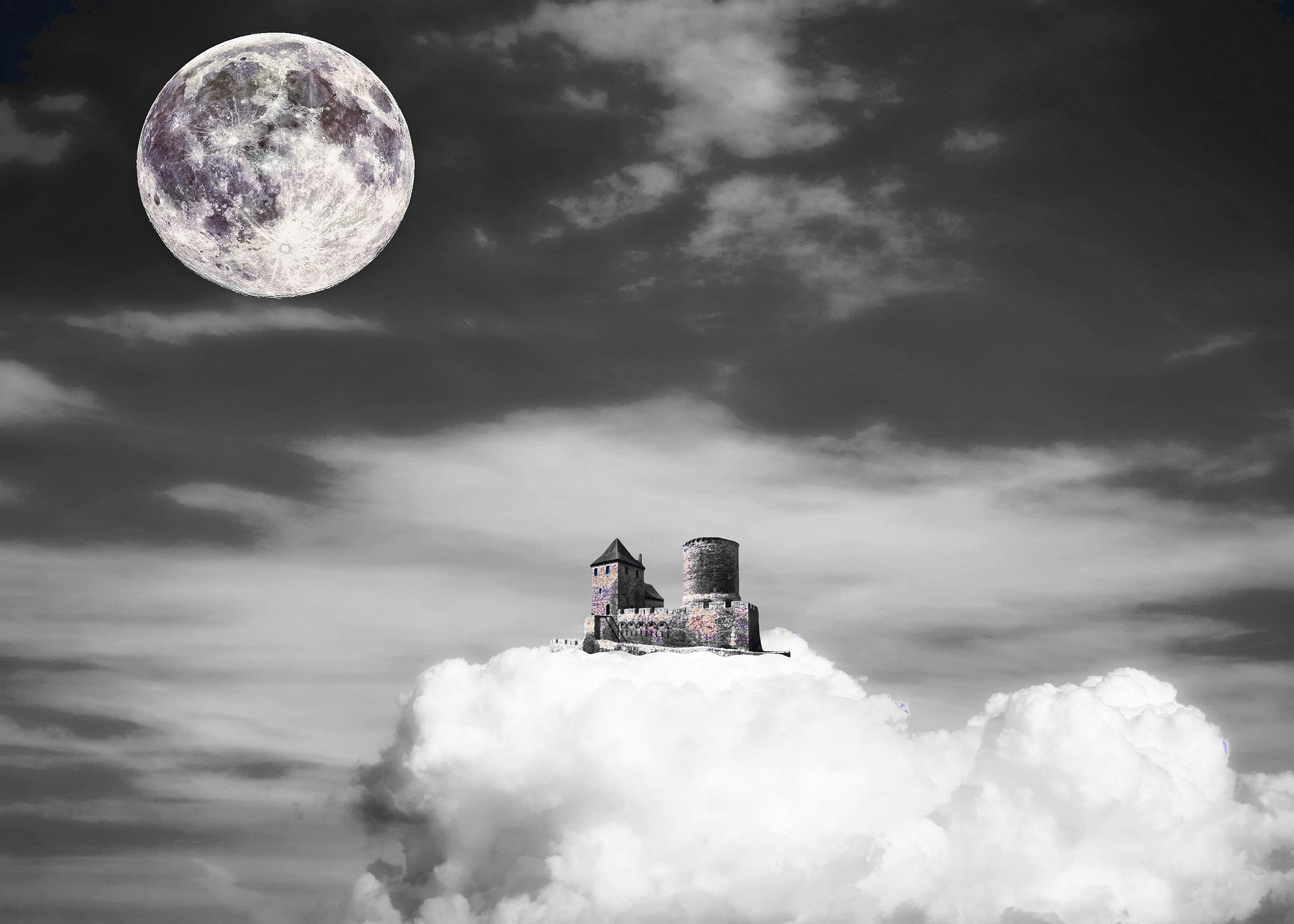
This is why I feel the subconscious and the unconscious cannot be used interchangeably. The nervous system creates subconscious programs but at the same time separates us from our whole selves.
The ego prevents us from achieving wholeness. Wholeness means healing. So the ego is making you ill.
The aim of the Essential Self-Development at Master Mind Content is to identify consciousness that has been split off and integrate the archetypal function into your conscious personality.
Consciousness researchers are increasingly finding evidence that supports Jung’s view. Every thought that passes through an individual’s mind is “transmitted as perception-contents through experience.”
In our “very structure is written the history of mankind” Jung wrote in 1923. [29] His view had not changed in 1959. “…we are not of today or of yesterday. We are of an immense age,” he told the BBC’s, John Freeman.
Whilst Jung acknowledged the unconscious clearly does have a personal nature, he was convinced that we are influenced by an unconscious content that is common to all mankind.
Thought-Provoking Quote
“But this personal unconscious rests upon a deeper layer, which does not derive from personal experience and is not a personal acquisition but inborn. This deeper layer I call the collective unconscious. I have chosen the term “collective” because this part of the unconscious is not individual but universal; in contrast to the personal psyche, it has contents and modes of behaviour that are more or less the same everywhere and in all individuals. It is, in other words, identical in all men and thus constitutes a common psychic substrate of a suprapersonal nature which is present in every one of us.” [30]
~ Carl Jung: The Archetypes and the Collective Unconscious
This view has been given a lot of scientific weight by the Czech-born psychiatrist Stanislav Grof. His research shows that people can access memories of their birth. And also recall past lives.
What the research doesn’t show precisely is whether the past life vision was lived by the individual — as religions claim — or whether the memory is accessed from the morphic field.
If it was lived by the individual and the “soul” reincarnates, then the morphic field may not have any weight. And vice versa. Are we individual systems that continue to live life until we become whole? Or is all the information we need to know about mankind stored in atoms in the morphic field?
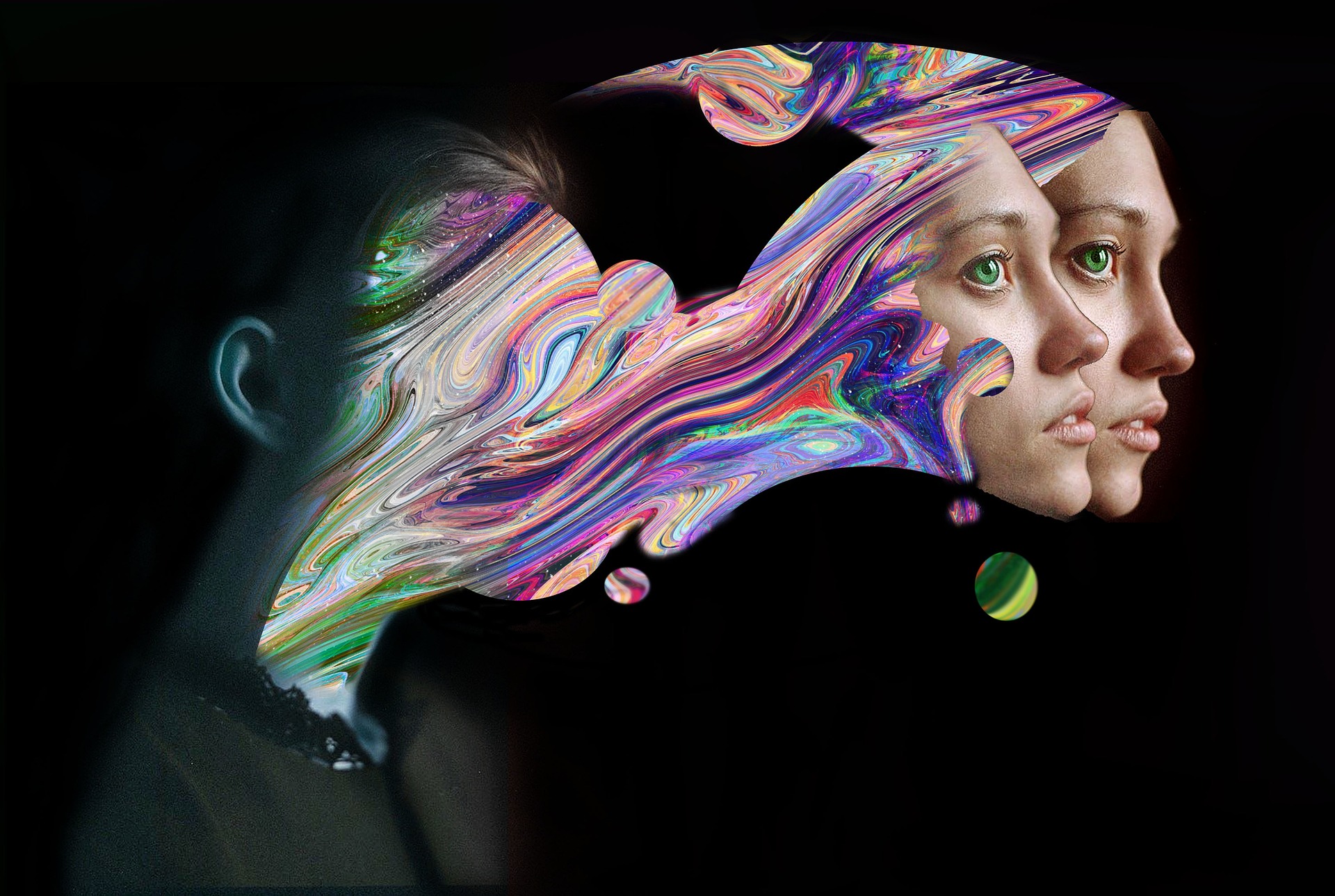
This is why consciousness is called the hard problem. Sometimes there is no definitive answer.
Many of the experiences Grof recorded in his patients were traumatic, or images that have some form of traumatic association attached to them. That means they could quite possibly be split-off fragments of consciousness an ancestor’s nervous system discarded way back when.
If we are to take the mechanistic view, this aspect of consciousness will, therefore, remain outside the scope of conscious awareness within a family bloodline. But that information would be programmed in the genes of the descendants the dissociated consciousness was passed down to.
So does everybody suffer the same neurotic conditions as their parents, siblings, aunts, uncles and cousins?
Apparently not. The conclusion is that a family does not get all the genes from their parents but some of them. According to the mechanistic view, the genes we inherit are random.
And everybody knows that nature is random. It doesn’t grow in perfectly symmetrical patterns or functional shapes at all.
Errrrm….talk about square pegs in round holes!
If we are to take the established view, consciousness is passed down by either side of the family. But surely the healthy genes would be the winner. Survival of the fittest and all that.
So, why are children born with diseases neither of their parents have? It doesn’t make sense.
Another important discovery that came up in Grof’s research was that memories of emotional and physical experiences are stored in the psyche and are not isolated bits and pieces. They form complex constellations, which he calls “systems of condensed experience” or COEX. [31]
The way in which Grof describes his thinking behind COEX systems fits the role played by the nervous system.
Thought-Provoking Quote
“There is a constant interplay between the COEX Systems of our inner world and events in the external world. External events can activate corresponding COEX systems within this. Conversely, COEX systems help shape our perceptions of the world, and through these perceptions react in ways that bring about situations in the external world that echo happenings in our COEX systems.” [32]
~ Stanislav Grof, The Holotropic Universe
Condensed experiences affect every area of our emotional lives. Each COEX system has a characteristic theme such as significant events that were humiliating, degrading, or shameful. [33]
COEX systems also explain why we develop psychosomatic symptoms such as back pain even when we haven’t been lifting anything. I used to get a random pain in my knee every now and then. It cleared up about two years ago. I wish I knew why.
COEX systems also influence how we perceive ourselves, consciously and subconsciously. Grof believes these systems are the foundation for “difficulties we have relating to ourselves and other people.” [34]
Deeper into his research, Grof discovered his “training as a psychiatrist” only explains two-thirds of the psyche. As I mentioned above, the third has been omitted from mainstream psychology because the established view leans more towards Freud than Jung.
In his own words, Grof says:
Thought-Provoking Quote
“I see consciousness and the human psyche as expressions and reflections of cosmic intelligence that permeates the entire universe and all of existence. We are not just highly evolved animals with biological computers embedded inside our skulls; we are also fields of consciousness without limits, transcending time, space, matter, and linear causality. As a result of observing literally thousands of people experiencing non-ordinary states of consciousness, I am now convinced that our individual consciousness connects us directly not only with our immediate environment and with various periods of our own past, but also with events that are far beyond the reach of our physical senses, extending into other historical times, into nature, and into the cosmos.”
~ Stanislav Grof, The Holotropic Universe
So back to Jung.
So far we have established that consciousness shapes our worldview by extracting information from our environment. i.e. the experiences we have in life. What we see, hear, touch, taste and smell determines what we like and don’t like, and gives us perspective.
Our worldview is also shaped by direct experiences, the information of which is stored in our subconscious as memory. The nervous system creates these memories by passing information extracted from the environment from cell to cell so that the body can react in some way.
How we react is typically founded upon a decision we make, the information of which is pulled out of the filing cabinet of stored memories in the personal unconscious.
We have also established that the nervous system is able to dissociate or repress information absorbed from our environment. It does this by rejecting the chemical messenger (neurotransmitter) to pass through the axon terminal. Therefore, a synapse cannot be extended and memory cannot be formed.
It is established that disassociated consciousness is the underlying cause of neurotic behaviour and psychosis. Jung noted that “Many complexes are merely split from consciousness because the latter [the ego] preferred to get rid of them by repression.” [35]
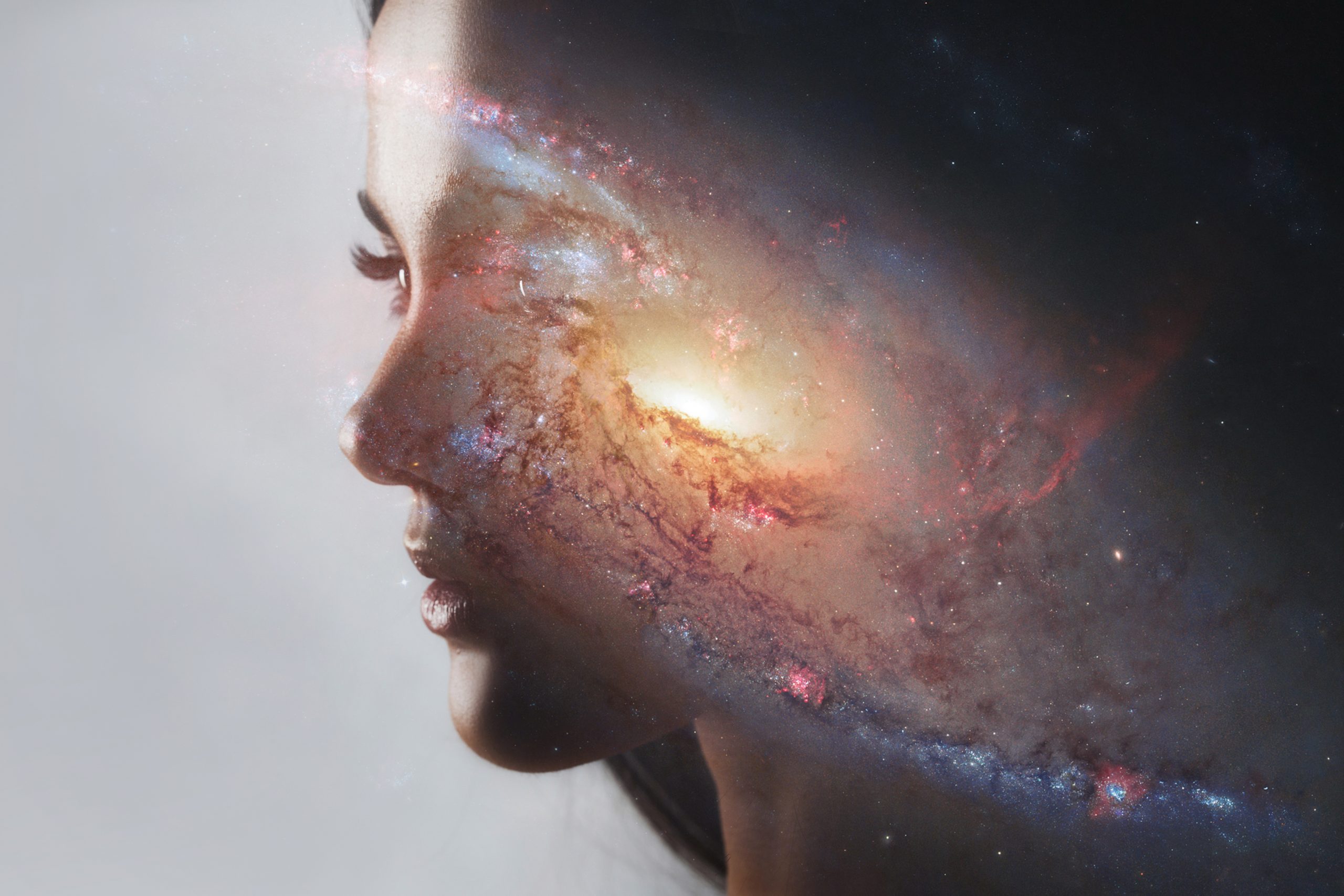
Despite consciousness being a “hard problem”, we know enough to understand that repressed consciousness needs to be brought into conscious awareness.
Developing the whole personality not only cures neuroses and makes us feel better, but also enables us to function more effectively in all aspects of our lives; family, social and professional.
The question is, how do we know which part of the personality is split off and needs to be recovered? Jung also had an answer for that.
The Swiss psychoanalyst believed the unconscious psyche has a preconditioned symbol-making function that is specific to humankind as a whole.
Thought-Provoking Quote
“The separation into pairs of opposites is entirely due to conscious differentiation; only consciousness can recognize the suitable and distinguish it from the unsuitable and worthless. It alone can declare one function valuable and another worthless, thus favouring one with the power of the will while suppressing the claims of the other. But, where no consciousness exists, where the still un- conscious instinctive process prevails, there is no reflection, no pro et contra, no disunion, but simple happening, regulated instinctiveness, the proportion of life. (Provided, of course, that instinct does not encounter situations to which it is still unadapted. In which case damming up, affect, confusion, and panic arise)…It would, therefore, be unavailing to appeal to consciousness for a decision of the conflict between the instincts. A conscious decree would be quite arbitrary, and could never give the will that symbolic content which alone can create an irrational settlement of a logical antithesis. For this we must go deeper; we must descend into those foundations of consciousness which have still preserved their primordial instinctiveness; namely into the unconscious, where all psychic functions are indistinguishably merged in the original and fundamental activity of the psyche.” [36]
~ Carl Jung, CW6, Psychological Types
Archaic symbols appear to us in dreams and images. But the archetypes can also appear in everyday life through “things that happen to one.” [37] Things that happen include calamities, misuse of narcotics such as alcohol, morphine, cocaine, and Freudian slips.
Jung also felt the archetypes show up in the personality of an individual as egoism, infantilism, paranoia, delusion, ‘sunk in thought’, intellectually one-sided, melancholy, taking things too seriously, hypochondria and many other complexes.
Jung’s study of synchronicity suggests that individualised psychological events, such as dreams and visions, often appear as patterns of meaningful coincidence. The need for symbolic meanings became the central tenant of Jung’s work.
The Swiss also said:
Thought-Provoking Quote
“..certain phenomena of simultaneity or synchronicity seem to be bound up with the archetypes.” [38]
~ Carl Jung, Synchronicity
Jung attributed destructive behaviours and neuroses to a “loss of soul.” In his 1923 book, Psychological Types, he identifies the soul as an expression of “God”. He also provides a psychological explanation to the writings of Meister Eckehart’s impression of “God”.
Ancient Wisdom Alert
“As I came forth out of God, all things said, ‘There is a God!” That cannot now make me blessed, for therewith I conceive myself as creature. But in the breakthrough, when I will to stand free in the will of God, and also free of God as well, and all it works, even of God himself – then am I more than all creatures, then am I neither God nor creature: I am, what I was, and what I shall remain, now and evermore!”
~ Meister Eckehart
Jung explains:
Thought-Provoking Quote
“The coming forth signifies a becoming aware of the unconscious contents, and of unconscious energy in the form of an idea born of the soul. This is an act of conscious discrimination from the unconscious dynamis, a severence of the ego is subject, from God (i.e. the unconscious dynamis) as object. In this way God “becometh”. When, through the “breakthrough”, i.e through a “cutting off” of the ego from the world, and through and identification of the ego with the motivating dynamis of the unconscious, this severance is once more resolved, God disappears as objects and becomes the subject which is no longer distinguished from the ego, i.e. the ego as a relatively late product of differentiation, becomes once more united with the mystic, dynamic, universal participation.” [39]
~ Carl Jung, CW6, Psychological Types
In short, the gods of mythology, and the God of the Bible, reflect archetypal energies that make “man in his image.” Ancient mythology is, therefore, a highly prized asset which can and should be, used to develop the whole personality.
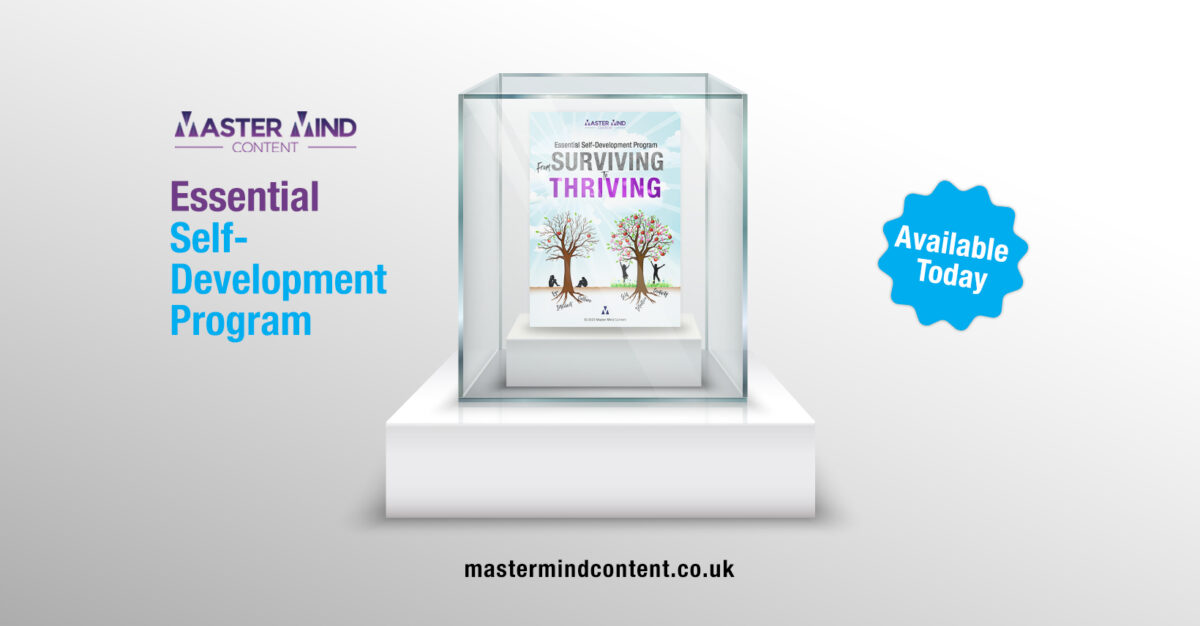
[1] Stanislav Grof, The Holotropic Universe, p.3 Kindle Loc 115 (1993)
[2] Ibid p.5 Kindle Loc 151
[3]Definition of Consciousness, Oxford English Dictionary
[4] Wilhelm Reich, The Function of the Orgasm
[5] Rupert Sheldrake, The Presence of the Past, p.123, Kindle Loc 1779, (1988)
[6] Robert Sapolsky, Behave: The Biology of Humans at Our Best and Worst p.197 (2017)
[7] Brain Basics: Genes At Work In The Brain, NIH
[8] Robert Sapolsky, Behave: The Biology of Humans at Our Best and Worst, p.197, (2017)
[9] Ibid, p.255
[10] Ibid, p.259
[11] Ibid, p.174
[12] Bruce Lipton, Biology of Belief, Kindle Loc 116 (2205)
[13] Carl Jung: Vol.9 Part 1, The Archetypes and the Collective Unconscious, para 3, 2nd ed, transl. R. F. C. Hull, (1968)
[14] Ibid, para 91
[15] Ibid, para 88
[16] Stanislav Grof, The Holotropic Universe, p. 5 Kindle Loc 157 (1993)
[17] David Bohm, Wholeness and the Implicate Order (1980)
[18] Ibid, p.13
[19] Stanislav Grof, The Holotropic Universe, p.10 Kindle Loc 223 (1993)
[20] Rupert Sheldrake, The Presence of the Past p.161, Kindle Loc 2257, (1988)
[21] Ibid p.160, Kindle Loc 2240-2245
[22] Ibid, p.17, Kindle Loc 309
[23] Ibid, p.12, Kindle Loc 243
[24] Ibid p.160, Kindle Loc 2273
[25] Paul Weiss, Principles of Development, p.291, (1939)
[26] David Bohm, Wholeness and the Implicate Order, pp.67-68 (1980)
[27] Ibid, pp.66-67
[28] Rupert Sheldrake, The Presence of the Past, p.21, Kindle Loc 373
[29] Carl Jung, CW6 Psychological types, p.423, (1923)
[30] Carl Jung: The Archetypes and the Collective Unconscious, para 3, Vol.9 Part 1, 2nd ed, transl. R. F. C. Hull, (1968)
[31] Stanislav Grof, The Holotropic Universe, p.24 Kindle Location 499 (1988)
[32] Ibid p.25 Kindle Location 525
[33] Ibid, p.25 Kindle Location 525
[34] Ibid, p.18 Kindle Loc 382
[35] Carl Jung, CW 11, Psychology and Religion, p.15. para 22, (1958)
[36] Carl Jung, CW6, Psychological Types, pp.142-143, (1923)
[37] Ibid, p.427
[38] Carl Jung, Synchronicity, p.30, (1950)
[39] Carl Jung, CW6, Psychological Types, p.316 (1923)
I should know, I tried both and the natural ways to fight anxiety and depression won hands down. The key is to adopt a healthy lifestyle, a positive mindset and integrate missing aspects of your personality that are buried in the unconscious.
It’s actually quite bewildering that some physicians still insist on handing out anti-depressant medication to treat patients with anxiety and depression. Having said that, mental health practitioners get paid by pharmaceutical companies. So it stands to reason.
“The Association of the British Pharmaceutical Industry (ABPI), reveals that £340.3m was paid by companies to UK healthcare professionals and organisations in 2015.”
The Pharmaceutical Journal
Oh yeah, your pill-pushing doctor cares more about lining their pockets than fixing your anxiety.

What makes matters worse, in my mind at least, is that anti-depressants are not only ineffective but they increase the risk of side effects.
Not that you’ll read that in mainstream media, drug trials or studies. They’ve also been paid off by the pharmaceutical companies they promote. But under-reported studies examining anxiety and depression do exist. Meta-analyses show there is little difference between the positive impact of antidepressants and a placebo.
Studies ultimately indicate that your psychological health is the most natural way to effectively fight anxiety and depression.
My own research backs this up. I asked participants in an Anxiety Support Group on Facebook how long they’d been taking medication.
The response was years: 10 years, 20 years, 30 years, 40 years and one over 50 years.
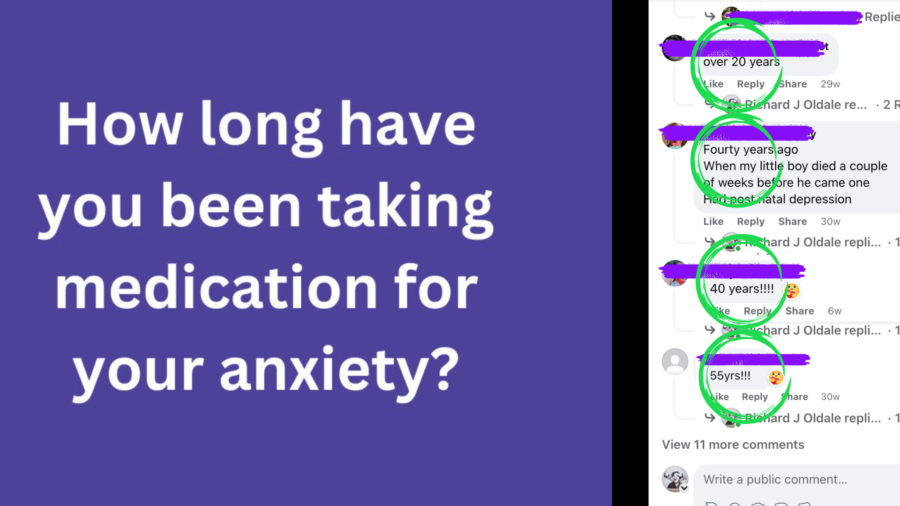
The drugs don’t work.
What’s more, they encourage you to mask the symptoms and hide your problems. Anxiety and depression emerge to inform you that something is not right with your life.
Something needs to change!
“Depression is like a woman in black. If she turns up, don’t shoo her away. Invite her in, offer her a seat, treat her like a guest and listen to what she wants to say.”
~ Carl Jung
Anxiety and depression are not the same per se, However, they are closely related. Anxiety can lead to depression and vice versa. People that carry chronic anxiety experience periods of depression and anxiety is a common symptom in depressive disorders.
If you know or suspect you have one or the other, it is likely that you will develop both. It’s also a smart idea to address the issues as soon as possible. When anxiety and depression are left unaddressed they can become life debilitating.
Typical Symptoms of Anxiety and Depression
Anxiety and depression can also be the precursor for other chronic diseases and mental health conditions including cancer, diabetes, heart disease, and stroke.
“The World Health Organization predicts that by the year 2030, depression will result in more years of life lost to disability than any other illness.” [1]
~ National Library of Medicine
Anxiety can start at any time in life. For a lot of people, it starts in childhood and adolescence. It’s no surprise that a record number of teenagers are reporting feeling anxious and depressed.
Given that anti-depressants are not the most effective strategy, here are 10 natural ways to fight anxiety and depression. For most people, the cure is a change in lifestyle and mindset.
Learning how to reduce the symptoms of anxiety and depression can be the first step to overcoming the affliction.
Avoiding alcohol, drugs, caffeine and cigarettes is a good start.
Substance abuse can worsen anxiety and depression symptoms and can have negative effects on your long-term mental health.
Alcohol is a depressant. Caffeine is a stimulant. Drugs are a combination of the two and cause downers. All of them have been linked as contributing factors to anxiety and depression.

While alcohol and drugs can provide temporary relief from anxiety and stress, the long-term consequences are more damaging than the short-term reprieve.
Alcohol and drugs are more likely to increase anxiety and exacerbate symptoms. [2] It’s a downward spiral. A dependency on drugs chips away at whatever remaining self-worth and self-respect you have.
Nurturing self-worth and self-respect, by the way, are natural ways to effectively fight anxiety and depression.
What’s more, substance abuse typically leads to disrupted sleep patterns — and according to the medical practitioners Google promote on the first page, sleep is one of the top 10 ways to fight anxiety and depression.
Studies show that a contributing factor to anxiety and depression is a lack of self-esteem. [3] On the flip side, deep and meaningful connections nurture self-esteem and improve your health and well-being. [4]
In contrast, hanging out with people that do not give you any respect or value your opinion, contributes to your anxiety. Especially if you have social anxiety or criticism anxiety.
“If you are surrounded by people who cross their eyes and look with disgust up at the ceiling when you are in the room, when you speak, when you act and react, then you are with the people who douse passions—yours and probably their own as well. These are not the people who care about you, your work, your life.”
~ Clarissa Pinkola Estes, Ph.D, Women Who Run With Wolves
Having a support system of like-minded people who understand you can provide a sense of belonging and help alleviate feelings of isolation. Talking to like-minded people helps to validate your view of the world, experiences and feelings.
This can help to reduce feelings of shame or guilt and help you feel more understood — emotional conditions that have been linked with anxiety and depression. [5]
Joining a group of like-minded people motivates you to get out of the house. If you have made yourself a hermit, you’re sinking deeper into depressive moods and increasing your risk of a more serious illness.
Being motivated to go places also encourages movement — and exercise is another top-rated strategy for fighting anxiety and depression that medical professionals suggest.

I have no arguments with that. Although I have narrowed it down to a single activity rather than the broad brush “physical activity”.
Do you want to know what it is?
Yep, walking.
Not very exciting or revolutionary, I know, but walking is a low-entry barrier which most people are doing every day anyway. So why is walking one of the natural ways to effectively fight anxiety and depression?
Well, first of all, people that are carrying anxiety and depression don’t typically have a great deal of get up and go. You’re also more likely to procrastinate and feel overwhelmed by the gym or spinning class.
And team sports invite anxiety because you’re afraid of making a mistake or looking foolish.
But walking. You’re doing that anyway. So just walk further — and faster. Here’s the kicker. You get more benefits from brisk walking.
Come on, you can do this!
People with anxiety and depression have low levels of endorphins, naturally occurring neurotransmitters that make you feel good about yourself. [6] Thus endorphins are natural ways to effectively fight anxiety and depression.
You don’t need anti-depressants to change your brain chemistry. You just need to get your ass off the couch and go for a long, brisk walk. Ideally in nature. Green spaces are shown to lift depressive moods. [7]

When you feel better within yourself – which endorphins deliver – you’re more inclined to adopt a positive attitude towards life. By promoting positive thinking, exercise helps you to eliminate your ingrained bias towards negative self-talk that is associated with anxiety and depression.
There is also another physical benefit. And this is where brisk walking comes to the forefront. When you breathe more deeply, you get more oxygen to the brain.
Higher oxygen levels in the brain improve cognitive function which helps you to concentrate and focus for longer — counteracting one of the symptoms of anxiety and depression. You will also be more productive which can help to nurture confidence and self-esteem.
Speaking of which, let’s talk about inner security. For me, overcoming insecurity was one of the keys to fighting anxiety and depression.
Insecurity is a fundamental factor to anxiety — on a number of levels. If your basic life needs are not being met, anxiety levels are more likely to increase.
Studies show that anxiety and depression are high among individuals that have food insecurity, housing insecurity and financial anxiety [8]. Abraham Maslow’s hierarchy of human needs indicates that food, housing, and clothing need to be fulfilled before you are motivated to attain the next level of security.
Most people with insecurity issues fall into the second and third categories of Maslow’s Theory of Human Motivation; financial security, emotional security and, thirdly, acceptance — friendship and intimacy.
As mentioned above, taking care of yourself physically and emotionally helps to fight anxiety and depression. But as I explain in the Master Mind Content Anxiety & Depression Program, a significant part of overcoming your condition is changing your mindset. Your psychological health involves several natural ways to effectively fight anxiety and depression.

One of the keys to addressing insecurity is to use a selection of mindset tools. For example, the Mind v Reality tool we offer in the Anxiety and Depression Program enables you to compare the story in your head (which is usually dramatic fantasy or illusion) against the most likely reality — which is usually closer to the truth.
Self-awareness plays a significant role in healing all types of mental disorders, not just anxiety and depression. When you understand the reason why you think, feel and act in a certain way, it can pave the way to adopting a healthy lifestyle and mindset that produce positive outcomes.
Expanding conscious awareness enables you to see the bigger picture in your environment. This helps to nurture your understanding of the world around you, where you fit in and the value you offer.
All this builds into an accumulation of self-confidence and higher levels of self-esteem, which is a key contributor and one of the most powerful natural ways to effectively fight anxiety and depression.
Setting achievable goals can help improve motivation and give you a sense of purpose. This is a strategy that can be used to fight anxiety and depression by providing structure to your life and leaving you with a sense of accomplishment.
People that lack self-esteem often have overwhelming feelings of helplessness which exacerbates anxiety. This can be offset by achieving goals that give your self-confidence and self-esteem a leg up.

The goals you set should be achievable and realistic. Feel free to start small and build on your successes little by little. But celebrate the small victories. Small victories accumulate into a larger store of energy that can be used to help transform feelings of depression.
Remember, if de-pression is a result of re-pression, you need to confront challenges your ego is resisting. The more times you repeat an experience, the easier it is to achieve greater and greater challenges moving forward.
The eminent psychoanalyst Carl Jung recognised that a one-sided attitude represses conscious aspects of your personality. When your instincts are repressed as a child, you tend to suppress them as an adult. And that causes a big problem.
“The dammed-up instinct-forces in civilized man are immensely more destructive, and hence more dangerous, than the instincts of the primitive (undeveloped ego), who in a modest degree is constantly living his negative instincts.” (brackets are mine) [9]
~ Carl Jung, CW6, Psychological Types
To develop as a person, and ultimately to feel good about yourself, you have to engage with life and become an active participant. So set achievable goals. If you become inflated and overly ambitious, self-doubt can creep in which will exacerbate your anxiety. And failure could push you back down into the doldrums.
There are times when self-soothing can help you to adopt a different mindset that fights anxiety and depression.
Before I explain what practising self-compassion is, let’s first establish what it’s not.
There seems to be a misconception about self-compassion in my opinion — by writers that don’t understand how consciousness works.
Advice like “actively alleviate yourself from suffering” and practice “self-kindness instead of self-criticism” is not quite on the mark.
I’ll explain why.
Self-criticism comes from the voice within. Actually, it comes from the Self — which Sigmund Freud called the Super-ego.
Hence, Self criticism.
As I mentioned above, in order to manage your environment and handle the challenges you face, you have to program the skills, attitudes, beliefs and emotions into the subconscious mind. The ego responds to subconscious programs.
If you don’t have a program for your ego to do something, your Self will say, ‘you can’t do this, you’re no good at this, this is stupid.’
If these words sound familiar, rather than wallowing in misery and confirming to the ego that you are no good, ask yourself, what skills and knowledge do I need to adopt so that I can do this, so that I am good at this and so this is not stupid.
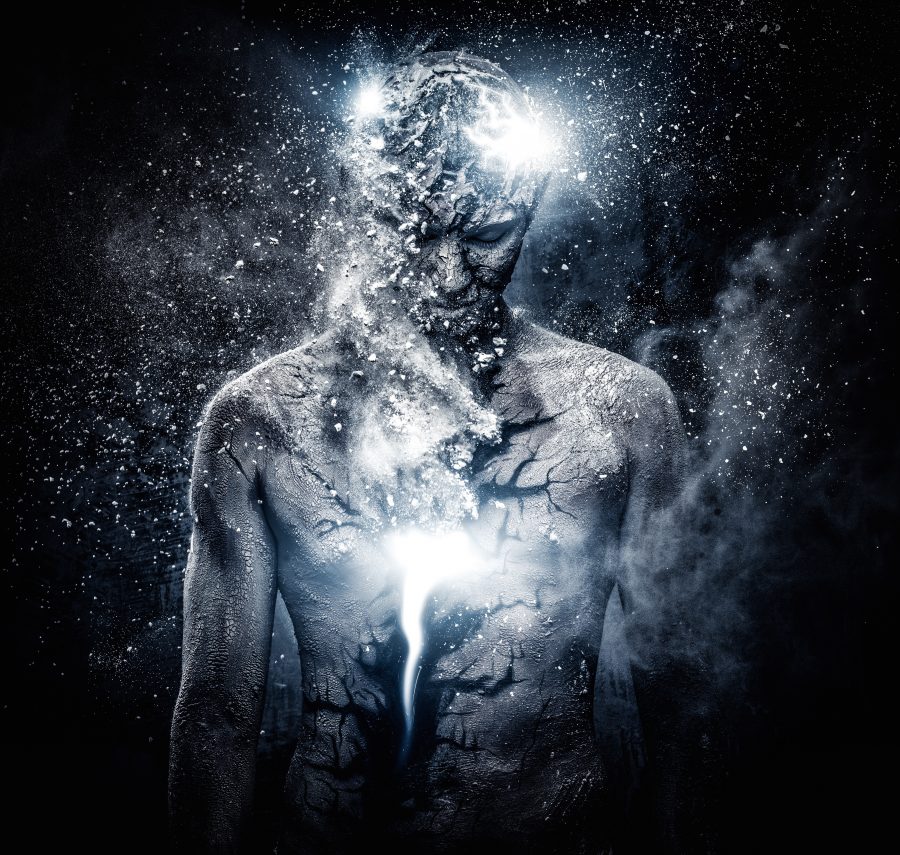
This is actually something the pharmaceutical industry recognises about depression — it is a symptom of an energy imbalance. However, the reason why anti-depressants don’t work for most people is that balancing energy is an individual endeavour.
It requires an internal conversation which brings the Self and the ego into agreement.
I’ve written an in-depth article which explains the Jungian concept of the Self-ego axis. To heal depression and other repressed aspects of your personality, you need to understand the relationship between the Self and the ego.
To give you a briefing:
“The Self is the ordering and unifying center of the total psyche (conscious and unconscious) just as the ego is the center of the seat of subjective identity whilst the Self is the seat of objective identity. The Self is thus the supreme psychic authority and subordinates the ego to it.” [10]
~ Edward Edinger, Ego and Archetype
Sigmund Freud also noted that an unconscious part of us, which he called the Superego, makes the ego feel guilty. But it does this because the Self wants the ego to become consciously aware of parts of the personality that are being ignored.
The experiences you have in life are the result of how you produce, store and project energy. This is determined by the thoughts, emotions and behaviours you do express versus the thoughts, actions and behaviours you don’t express.
When you suppress emotions or your instinctive nature, you are not allowing parts of the Self to express itself. Self-criticism is the Self informing the ego that you need to develop aspects of your nature.
Practising compassion, therefore primarily involves being respectful to the Self. Listen to the “criticism” (advice) your ‘Higher Self’ is offering because this is your True Nature. You have to allow the instinctive side of human nature to be given expression.
“We spend so much time trying to understand the world and ourselves intellectually that we have virtually cut ourselves off from the spontaneous, guilt-free experience of our emotional and irrational natures.” [11]
~ Robert Johnson, Ecstasy
When the Self is criticising you, it’s not actually criticising you but trying to draw your attention to hidden talents, beliefs, attitudes and emotions that you have in your locker. You just haven’t used the key yet.
That’s not actually your fault. This is where the self-soothing talk comes in. But that’s only one-half of practising self-compassion. You still have to develop the parts of your personality the Self is trying to draw your attention to. And if you continue to ignore it, the Self will continue to criticise you.
You must stop denying archetypal energies to be expressed. Jung said to heal complexes and diseases there has to be a reconciliation between the unconscious mind and the conscious mind; the Self-ego axis. That involves a dialogue which brings the opposing energies into harmony.
“The feelings of boredom and apathy from which city dwellers today often suffer is only temporarily offset by such artificial excitements as adventure films and time-killing “amusements”. Jung stressed that the only real adventure remaining for each individual is the exploration of his own unconscious. The ultimate goal of such a search is the forming of a harmonious and balanced relationship with the Self.” [12]
~ Marie-Louise von Franz, Carl Jung: Man And His Symbols
Start by observing your thoughts, emotions and actions and identifying where they are creating problems in your life.
Practising compassion also requires you to be kind to yourself when you make a mistake or something goes wrong. Instead of criticising yourself, question what could you do better.
The Self has the answers which is why it criticises the ego. Mistakes are designed to help you become consciously aware that there is room for improvement.
A common trait in patients with anxiety and depression is negative thinking. This can happen for several reasons, namely because fear-based programs in your subconscious rise to the surface more frequently, and low energy levels influence feelings of hopelessness.
If you find yourself doing any of the above, stop for a moment, and evaluate the evidence. Ask yourself whether there is any evidence to support the negative thought, negative emotion or negative reaction.
Oftentimes, there isn’t. Negative thoughts are based on assumptions or generalisations rather than facts. The Mind v Reality Tool in the Master Mind Content Anxiety and Depression course helps you to apply perspective and take your foot off the negative pedal.
One of the issues that contribute to anxiety and depression is living in your head. This was certainly the case for me. When you live in your head, the intellect has autonomy over instincts.

And the intellect cuts you off from your feelings by way of disassociation. Emotions that are re-pressed and continuously sup-pressed manifests as de-pression.
Negative thinking can occur in several ways. Research shows that pessimistic attitudes are hardwired the first time you have a bad experience with something. It can also be inherited by negative parents. Negative thinking, therefore, is a default program. [13]
Negativity bias typically emerges in infancy. As a baby, you picked up cues such as facial expressions and tone of voice from the people in your environment. If you spent time around negative adults in toxic environments, your neural pathways were programmed with negative thought patterns.
Negative thinking brings up feelings of fear and anxiety. When you expect a negative outcome, you have a tendency to avoid opportunities and thus deny yourself the possibility of success because the fear of failure outweighs the potential gain.
The more you avoid life, the less archetypal energies you develop. Ultimately, your ego remains in a child-like status because it doesn’t have a program to deal with your environment. Over time, your anxiety and depression worsen.
“This man-child is the victim of a serious affliction. If he is not helped, his life will slowly turn sour. He is not mentally ill, nor is he incapable of functioning in society. He is, however, very sad. He sees life as a waste of time. He tries hard to camouflage his sadness with gaiety and sporting fun. In many cases his trickery works, at least for a few years.” [14]
~ Dan Kiley, Peter Pan Syndrome, Men Who Have Never Grown Up
Negative thinking is not only a causal factor of anxiety and depression, it gradually drives you to deeper levels of despair. Allow negative thinking to take charge of your decision making and you will become increasingly divorced from reality; deluded and demented.
A useful tool you can use to help combat negative thinking in the Master Mind Content Anxiety and Depression program is the reframing tool. This prompts you to look at situations from a different angle and consider alternative explanations which are grounded in rationale and logic rather than fantasy and illusion.
The capacity for healthy reasoning proves a healthy mindset and is one of the natural ways to fight anxiety and depression.
Confronting your fears is a key strategy for overcoming anxiety because it helps you to develop your ego — and the ego is important for helping you to manage everything life throws at you.
“While it is sometimes assumed in depth psychology that the Ego is secondary in importance to the unconscious, the Ego is in fact vital to our survival. It is only when it is possessed by, identified with, and inflated by another energy form — an archetype or complex (an archetypal fragment like the Tyrant) — that it malfunctions. Its proper role is to stand back and observe, to scan the horizon, to monitor the data coming in from both the outside and the inside and then, out of its wisdom – its knowledge of power, within and without, and its technical skill in channeling – make the necessary life decisions.” [15]
~ Robert Moore, Douglas Gillette, King, Warrior, Magician, Lover
When you avoid things that make you feel anxious or depressed, it can reinforce your fears and negative beliefs. Remember, the experiences you have in life programs your subconscious to have more of those experiences.
And this puts people that suffer from chronic anxiety in a state of paradox. On the one hand, you need to face things the ego is resisting, but when you do your anxiety levels go up.
The ego gets anxious because it doesn’t have a program that informs it how to handle a situation in your life. It needs the experience to develop the program.
Subsequently, avoidance is not an option. Therefore, when you face your fears, you need a strategy that will enable you to combat the anxiety you feel.
Again, this comes down to mindset. Most challenges you face that make you anxious can be put right by changing your attitude towards something. Reframing and the Mind v Reality tool in the Master Mind Content Anxiety and Depression Program work for this.
Also, start small and build up your confidence. Create a plan for how you will confront your fears and incrementally take a step up towards the bigger challenges.

One of the key tips is: don’t fret about things that are out of your control. There is a solution to every problem.
The life coaches at Master Mind Content work with you to address your challenges and find solutions. Sometimes the resolution is practical, and other times, the right approach is to reframe your mental status so that you can work to implement practical strategies that achieve positive outcomes.
This was a biggie for me. In my teens and 20s, I wasn’t on the right path, and although I had a job I was engaged in, I was growing more and more restless. Little did I realise that it was my career choice that was making me restless — until that was shown to me (which is a story for another day).
The Austrian neurologist, psychiatrist and philosopher, Viktor Frankl said that neurosis is caused by a lack of meaning and purpose in your life. [16] If you’ve nothing to get out of bed for in the morning, then there is nothing to get excited about.
Purpose and meaning fuel your passion. Passion is a vital energy that gives you the capacity to engage with life, feel your emotions and drive you to success. The libido that drives passion is Love. The opposite of love is fear. Depression is a symptom of fear.
Again, I will come back to my earlier point. De-pression is caused by re-pressing aspects of your personality. You have to express consciousness in order to give the whole personality life.
“When the experience of the static masculine has been well-proportioned, the compensatory experience of the dynamic feminine will be well-proportioned. The ego personality flows naturally with the dynamic feminine toward reaffirmation of its being in the static feminine as a natural developmental sequence. When the experience of the static masculine has been excessive, the compensatory experience of the dynamic feminine will be excessive, and there will be a tendency toward a fixation on this axis and an inability or resistance to an experience of the static feminine and a shift to the other axis. [17]
~ Gareth Hill Ph.D, Patterns of Immaturity and the Archetypal Patterns of Masculine and Feminine
It’s worth noting then that the opposite of life is death. If you are not giving the buried aspects of your personality the chance to live, you become dead inside. The energy is stagnant.
In esoteric symbolism, water is a symbol of energy. When water becomes stagnant it becomes a breeding ground for dangerous diseases. The same is true for the body when your energy becomes stagnant.
“It is a fact that if an impulse comes up and is not lived out, then it goes back down and tends to develop anti-human qualities.” [18]
~ Robert Johnson, Ecstasy
In his book Freedom: The End of the Human Condition, the Australian biologist Jeremy Griffith explains that being human requires nurture. Our innate nature is “cooperative and loving.” [19]
If you’re not living from a love-based centre, you’re living from a fear-based centre. Fear destroys life.
Find your purpose in life and you have a reason to live.
Self-acceptance plays a huge role in self-development in general. This is not just a natural way to effectively fight anxiety and depression but should be a pillar of life, period.
When you accept yourself as you are, including your flaws and imperfections, it helps you to build a stronger sense of inner security.
Overcoming insecurity is one of the three keys you will learn in the Master Mind Content Anxiety and Depression Program. Insecurity is an outcrop of low self-esteem.
A typical symptom of insecurity is a limiting belief that you are not good enough. The seed may have been planted as an infant when your parents did not give you the emotional comfort you needed. Or it could be that you were reprimanded for showing instincts that are not considered acceptable; i.e you were yelled at or smacked when you got angry.
Feelings of insecurity can also emerge — or be reinforced — in school. This is particularly true of children that did not perform as well as the other kids in your class.
The tricky teenage years and early adulthood, when you become interested in romantic relationships, can further put a serious dent in your confidence and self-esteem. Feelings of inadequacy can develop into an inferiority complex which puts you at greater risk of becoming anxious and depressed. [20]
If you have an introverted nature, times of despair make you sink further into your world of fantasy. Your nervous system develops a coping mechanism by means of disassociation. [21]

Although evolution’s intention behind dissociation is to protect your emotional well-being, the irony is that the nervous system causes damage to your mental and physical health over the long term.
It seems as though coping mechanisms are a delaying tactic. But this evolutionary strategy is only useful if mankind is self-aware and knows how to evolve the conscious personality.
“The essence of Jung’s philosophy of life: Man becomes whole, integrated, calm, fertile, and happy when (and only when) the process of individuation is complete, when the conscious and the unconscious have learned to live at peace and to complement one another.” [22]
~ John Freeman, Carl Jung, Man And His Symbols
I explain how the nervous system ‘dissociates’ from reality as a protection mechanism in the article, How The Nervous System Works which is available in the VIP members section for customers.
Understanding how the body and mind work can help you to reach self-acceptance quicker because you recognise the times in your life when consciousness was not given expression, i.e. when you were disciplined for getting angry.
The archetypes tool that Master Mind Content provide in our Self-Development courses, shows you which qualities need to be given expression. It shows you how to identify qualities that are programmed in your subconscious and archetypal energies that need to be recognised and given expression. These are the qualities you are repressing.
Here’s an example:
“If a man suppresses his feminine features, the consequence is that he unconsciously becomes feminine. This takes the form of irrational moods, sudden accesses of sentimentality, fascination with pornography, historical qualities, and so on. If on the other hand he consciously acknowledges and develops his feminine traits, then he will cling less rigidly to principles, become generally more human, emotionally warmer, and become more open towards the irrational, artistic side of life….In the absence of it [the feminine principle], women must become masculine in order to prevail, or else they remain unable to overcome a deep-seated lack of self-confidence.” [23]
~ Marie-Louise von Franz, Archetypal Dimensions of the Psyche
Individuals that repress consciousness remain in a state of dissociation. This one-sidedness will often cause you to become disconnected from yourself (The Self) and from the outside world.
When you deny The Self to be expressed, you deny reality because the ego isn’t given the opportunity to develop a program that enables you to take appropriate action.
This is why you get anxious whenever you are confronted with anything new. The ego fears the unknown. Low levels of anxiety are actually a natural state of existence that gets out of hand when you don’t develop your ego. Instead, the ego begins to associate with your avoidant nature.
When anxiety levels are allowed to accumulate, they become chronic and prompt you to stay in your comfort zone. Addiction is commonplace because familiarity makes the ego feel safe.
When you do not accept the Self, you deny the ego the opportunity to learn and grow from new experiences. Subsequently, the ego does not mature and remains in an infantile state that cannot responsibility and becomes afraid of life.
Thought-Provoking Quote
“The suppression of infantile and primitive claims, which is often necessary on “civilised” grounds, easily leads to neurosis or to the misuse of narcotics such as alcohol, morphine, cocaine, etc. In more extreme cases the cleavage ends in suicide.” [24]
~ Carl Jung, CW6, Psychological Types
When you live life from a fear-based centre, you become hamstrung even when there is nothing to fear. When you don’t express energy it can manifest as more fear (and worse). This is symbolised as darkness and death in mythology. If you remain in a fear-based centre, you will experience darkness and death.
Self-acceptance involves accepting the Self. To do this, you need to recognise where the ego needs to develop and integrate the missing aspects of your personality into the conscious mind.
“….careful awareness of the transpersonal level of the psyche is required. This means one must be Self-oriented rather than ego-oriented.” [25]
~ Edward Edinger, Anatomy of the Psyche
A growing number of physicians and nutritionists are recognising the importance a healthy diet has for the body and mind. Unfortunately, the comfort foods sold in supermarkets are not doing you any favours if you have depression.
Nutritious foods stimulate a cocktail of chemicals in the gut microbiome which give you energy and vitality. These chemicals support mental health, mood and overall well-being.
When the body does not get these nutrients, you feel run-down, lethargic and unable to face life. In times of stress and low moods, you turn to comfort foods — which do not provide you with the nutrients you need.
Diet and depression become a vicious cycle.

Whilst research has shown that a poor diet can cause the onset of depression (possibly true in some cases, but probably not in most), depression certainly prompts you to make poor food choices. [24]
The diet of individuals with depressive moods typically consists of comfort foods — principally sugar. But sugar only gives you a momentary high before you crash.
In other words, the food industry is killing us softly. And food regulators are culpable.
Eating a healthy, balanced diet can help improve mood and reduce anxiety and depressive symptoms. The key is to eat foods that support the gut microbiome and reduce inflammation.
For your gut microbiome to work effectively, you need to increase the consumption of Omega-3 oils found in fish such as salmon, cod and sardines, together with nuts and seeds such as walnuts, pumpkin seeds, chia and flaxseeds.
Also, eat meat and vegetables that are rich in nutrients the body needs to regulate mood; B6, B12, vitamin E, vitamin C, folate, fibre, iron, Vitamin D, Vitamin A and Vitamin K.
The difficulty I find with managing my diet is knowing which nutritionists to believe. There is so much conflicting advice and evidence that food consumption has become a minefield. Even eating too many superfoods in a day can be dangerous to your health.
The best approach to diet that I’ve found is to eat everything in moderation. Create a diverse menu that contains the nutrients your brain and body need. Also, stay out of the supermarkets and resist comfort eating.
The life coaches at Master Mind Content have first-hand experience in overcoming anxiety, depression and addictions and want to share the tools we developed with you. The Master Mind Content Anxiety & Depression Program helps you to identify archetypal energies you are ignoring and subsequently causing problems in your life. These tools enable you to successfully emerge feeling stronger, positive and at peace with yourself.
Download the Anxiety & Depression Program Now.

[5] The Role of Shame and Guilt in Social Anxiety Disorder, P. Schuster et al
[6] What are Endorphins? Mental health America
[9] Carl Jung, CW6, Psychological Types, p.175 (1923)
[10] Edward Edinger, Ego and Archetype, p.3 (1992)
[11] Robert Johnson, Ecstasy, Kindle Loc 265
[12] Marie-Louise von Franz, Carl Jung: Man And His Symbols, p212 (1964)
[13] What Is the Negativity Bias?, K Cherry (2022)
[14] Dan Kiley, Peter Pan Syndrome, Men Who Have Never Grown Up p.4 (9183)
[15] Robert Moore, Douglas Gillette, King, Warrior, Magician, Lover, p.106 Kindle Loc 1600 (1990)
[16] Viktor Frankl’s Logotherapy: The Search For Purpose and Meaning
[17] Gareth Hill Ph.D, Patterns of Immaturity and the Archetypal Patterns of Masculine and Feminine
[18] Robert Johnson, Ecstasy, Kindle Loc 355
[19] Jeremy Griffith, Freedom: The End of the Human Condition p.95, par 153, Kindle Loc 2872
[21] What’s the Link Between Trauma and Dissociation?, Hope Gillete, PsychCentral (2021)
[22] John Freeman, Carl Jung, Man And His Symbols, p.14 (1964)
[23] Marie-Louise von Franz, Archetypal Dimensions of the Psyche
[24] Carl Jung, CW6, Psychological Types, p.425 (1923)
[25] Edward Edinger, Anatomy of the Psyche, Open Court (1995)
One hundred metres from where I was walking, were four teenage girls. One of them was crying and the other three stood around hugging her and giving her words of comfort.
This is compassion.
It was apparent the three boys had been hanging out with the girls when one of them looked in the direction of the boys to see what was happening.
I assumed the two teenagers that were under some emotional stress were dating and had just split up. But note the difference between how males and females behave.
The boy rushed away because wanted to be alone. Or maybe he didn’t want his friends to see that he was upset. Boys are raised to believe we should only express our emotions in private.

Some boys are led to believe that boys don’t cry. They might not even be releasing their pain at all. Holding in tears in this way can have dire consequences further along the line.
Men that learned to suppress their emotions when they were boys store up energy that will be released in some other way. In adult men, holding in emotions suppresses libido that typically resurfaces as anger, resentment, aggression, violence, restlessness and frustration. [1]
Your reaction largely depends on whether you are predominately introverted or extroverted. Introverts turn their emotions inwards. Extraverts may channel it into the environment.
The latter unleashes the unhealthy attributes of the Hero archetype. If you have developed the healthy qualities of the Hero archetype, you will express suppressed energy in a healthy way such as through sports, dancing or talking about how you feel with someone.
Men are allowed to express their emotions. Just as importantly, you are allowed to receive compassion from other people as well. Compassion is not sympathy and pity that makes you feel weak. It is comfort that provides you with emotional support.
On the other end of the spectrum is the introvert that bottles up emotions and turns them inwards. This can result in abandonment issues, depression, self-hate, self-harm and debilitating illness [2].
When wounded, the Divine Child and the Everyman are the two archetypes that are the most cut off from their emotions. Holding in emotions was probably a defensive mechanism you developed in early childhood or adolescence.
However, repression and suppression resurface in unhealthy and destructive ways.
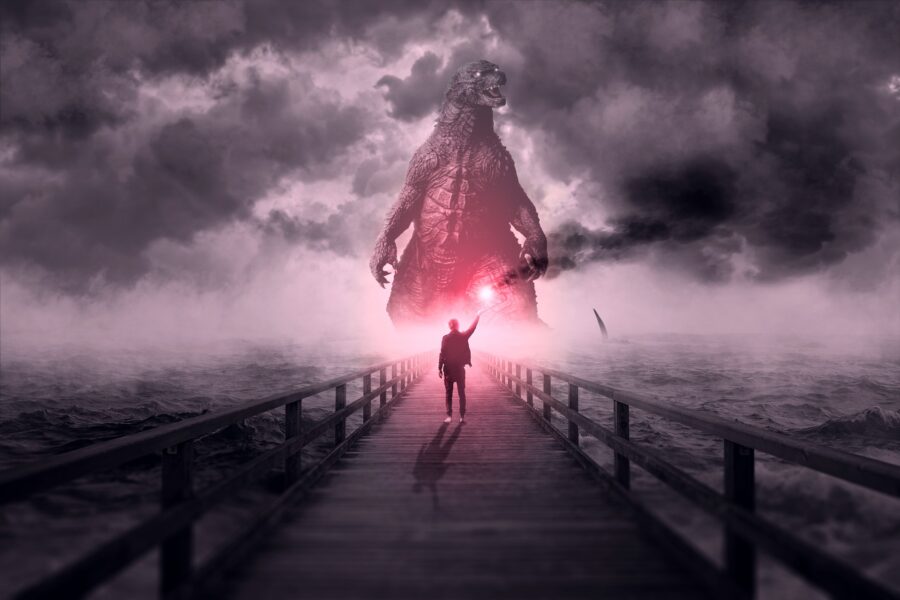
Before we discuss repression and suppression, it’s pertinent to distinguish one from the other.
Repression is the cutting off of consciousness. The split-off consciousness is buried in the unconscious and is not accessible to the conscious mind.
Suppression is when you are aware of a negative emotion, but hold it in and push it down. Suppression is a conscious intent that you have control over. Therefore, you have the power to address emotional issues.
It’s just a matter of choice.
Here are a few reasons why you should choose not to hold in emotions or deal with them appropriately in the right circumstances.
Suppressing emotions can lead to a variety of negative consequences, including physical, psychological, and interpersonal problems.
When we suppress our emotions, we may experience physical symptoms such as headaches, fatigue, muscle tension, and digestive problems. Over the long term, there is an increased risk of high blood pressure, heart disease, diabetes and cancer. [3]
This is because emotional stress can cause physiological changes in the body, and suppressing these emotions can result in chronic tension that leads to physical symptoms.
Suppressing emotions can also lead to psychological problems, such as mood disorders, anxiety and depression. When we suppress our emotions, we may feel disconnected from our feelings, which can lead to a sense of emptiness and disconnection from others. [4]
A study during Covid identifies there was an increase in destructive behaviours as a way to cope with suppressed emotions. Alcohol, drugs, or other addictive behaviours may provide temporary relief from the discomfort of suppressed emotions, but can ultimately lead to addiction and other negative consequences over the long term. [5]

Holding in emotions can also affect our relationships with others. When we suppress our emotions, we may have difficulty expressing ourselves and may become emotionally distant or defensive. This can lead to misunderstandings, conflicts, and a breakdown in communication with others.
In extreme cases, holding in emotions can lead to self-harm, such as cutting or other forms of self-injury. When we suppress our emotions, we may feel overwhelmed by the intensity of our feelings and may resort to harmful behaviours as a way to cope.
Sigmund Freud developed a theory that unacceptable urges and desires are repressed. Repression typically takes place in childhood to dampen natural instincts that are not considered good behaviour.
The Swiss psychiatrist and psychoanalyst, Carl Jung shared Freud’s view. Whilst Freud believed repression shows up in the way people act and what they clumsily say (Freudian slips), Jung found repressed emotions resurface in opposition to one-sided behaviour.
Jung recognised that the unconscious mind played an important role in our psychological health and well-being. He argued that repressed emotions could manifest as a variety of psychological and physical symptoms, particularly anxiety, depression, and neurosis.
However, he also noted that such symptoms were nature’s way of identifying an imbalance in the psyche of an individual. When we are too excessive towards one type of quality — thinking, feeling, sensation or intuition — the psychic energy (libido) that is ignored possesses the individual in some way.
“Without the repression of everything that differs from itself, the directed function cannot operate at all. But, on the other hand, the self-regulation of the living organism makes such a strong, natural demand for the harmonising of human nature that the consideration of the last few functions forces itself to the front as a necessity of life and an unavoidable task in the education of the human race.”
~ Carl Jung, Psychological Types
Depression is a good example of this imbalance. When a person is cut off from their feelings in favour of the thinking quality, feelings of deep sadness surface to inform you of the imbalance.
Consciousness makes itself known.
Jung also believed that repressed emotions and desires resurface in the form of symbolic images, such as dreams, ‘phantasy’ or synchronicity. He argued that these images could provide important clues about the underlying psychological issues that were causing the symptoms.
“The sources of dreams are often repressed instincts which have a natural tendency to influence the conscious mind…the resultant sequence of fantasies relieves the unconscious and produces material rich in archetypal images and associations.”
~ Carl Jung, The Archetypes and the Collective Unconscious
To address repression, Jung developed several therapeutic approaches such as dream analysis, active imagination, and symbolic interpretation. Through these various techniques, individuals are able to gain insight into their repressed emotions and create a strategy that enables them to bring ignored aspects of their personality into conscious awareness.
To develop the whole personality, consciousness has to be experienced and express them. The word ‘Whole” comes from the Anglo-Saxon word for health.
Holding onto grudges can cause mental and/or physical illness over time. Bottling up your hatred and distaste for something that someone did to you has been linked with higher levels of stress levels, which can contribute to high blood pressure, heart problems, lowered immunity, anxiety and depression.
If you’re fighting anxiety and depression, cultivating the art of forgiveness may be a tool that helps you to transform the way you feel. The art of forgiveness is all a matter of mindset which enables you to upgrade your subconscious programs.
Grudge-holding can also impair your personality and your relationships with others. Studies show that people that hold onto big grudges from their past also hold onto small grudges in the present.
This naturally traps you in feelings of negativity such as anger, frustration, bitterness, resentment, hopelessness and emptiness. These are all unhealthy symptoms associated with the wounded Everyman.
If a grudge prompted or is prompting, you to retaliate, focus on healing the wounded Creator. And stop planning your revenge immediately. Instead, start practising the art of forgiveness.

Cultivating the art of forgiveness is not about excusing someone’s actions or forgetting what they did. It’s about releasing the negative emotions associated with the event and choosing to move forward with a positive attitude.
In her book, Women Who Run With Wolves, Clarissa Pinkola Estes, Ph.D, notes that the act of forgiving “does not mean giving up one’s protection, but one’s coldness.”
“One deep form of forgiveness is to cease excluding the other, which includes ceasing to stiff-aim, ignore, or act coldly toward, insisting on being neither patronizing nor phony. It is better for the soul-psyche to closely limit time and repartee with people who are difficult for you than to act like an unfeeling mannequin.”
~ Clarissa Pinkola Estes, Ph.D, Women Who Run With Wolves
Forgiveness is not easy to do — especially if you feel deeply hurt by someone’s actions. You will know when you have forgiven someone when you feel sorry for the person rather than rage. You also stop ruminating and go over the conflict-conversation you want to have with the person.

Before you can forgive someone, it’s essential to acknowledge how you feel about them. Hate, anger and resentment carry a powerful emotional charge that is destructive to your health. You must accept that holding a grudge is damaging your mental and physical health before you can move forward.
Empathy is a wonderful gift and an essential step in the art of forgiveness. Empathy involves putting yourself in someone else’s shoes and understanding their emotions, perspective and motivation.
Ask yourself, what happened to that person to make them do such a terrible thing to you. Because for anybody to do something bad to another person, something bad had to happen to them as well. They simply were not aware of the emotional harm they were causing you.
If the pain and resentment you are harbouring is the product of the break-up of a relationship, consider why the person in question ended the relationship. You may need to look at your own behaviour and admit to your own shortcomings.
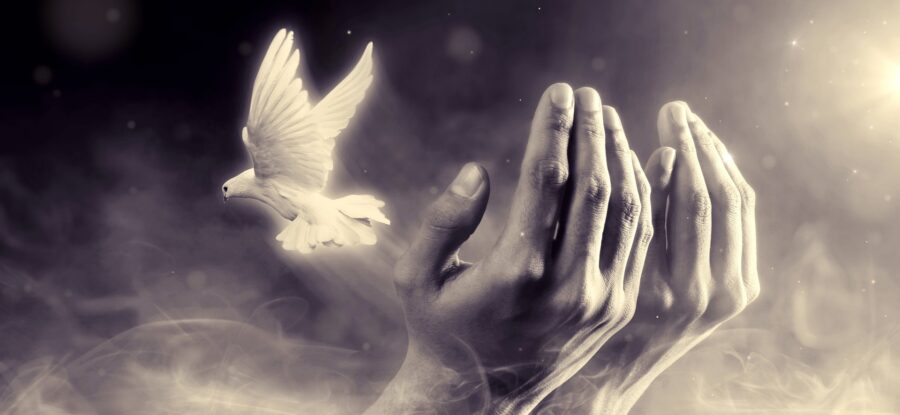
The art of forgiveness also means forgiving yourself. You didn’t deserve to be ill-treated. If you pin any of the blame on yourself or feel guilty, be kind to yourself. If it helps, write a letter to yourself with a heartfelt apology and a confirmation that you are not to blame.
Emotions are programmed in your nervous system and will surface whenever a thought or reminder of the person that tormented you comes into your conscious awareness.
Learn to recognise when anger and resentment are surfacing and try to let go of these feelings. Forgiveness is about letting go of the past and focusing on the present. Remember, you didn’t deserve to be ill-treated. You sure as hell don’t deserve to relive the pain. So just let it go.
If you feel as though you need some guidance about letting go of anger and resentment this article will help: Overcoming Anger and Resentment: The Cause and the Cures
If the person who hurt you is someone you want to maintain a relationship with, communicate how you feel about them. It is advisable to take this step once you have learned to release anger and resentment because you don’t want the conversation to be confrontational. Be honest and open about how their actions made you feel. The conversation will help to heal you both.
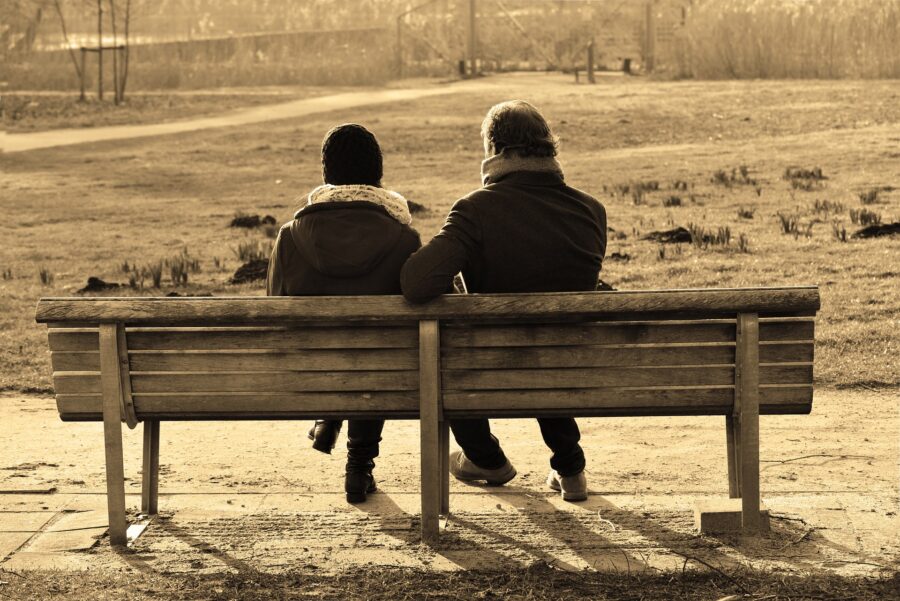
Subconscious programs are not always easy to change. When somebody has caused you pain, forgiveness does not always come easily. It needs to be cultivated.
The art of forgiveness requires regular practice. Like any art form, you have to master your instruments before your art gets easier. In this case, your instrument is your subconscious mind and it’s playing the wrong tune. The art of forgiveness relies on upgrading your subconscious until you find harmony and peace.

The actual figure is likely to be higher.
A growing body of evidence shows that abandonment is a significant contributor to anxiety and depression. If you were abandoned physically or emotionally as a child, the chances are that abandonment issues are an underlying demon lurking behind your anxiety and depression.
We can also abandon ourselves. If you don’t trust yourself, or repress parts of your personality that you believe is not acceptable, you are abandoning your True self and pushing it into the shadow. [1]
You also abandon yourself by adopting other people’s preferences, beliefs and ideas just to fit in. This is something I was guilty of as a teenager, but I’d also been emotionally abandoned by my parents and sibling.
Comforting, compassion and understanding are basic human needs that instil emotional security and psychological stability.

According to attachment theory, my psychological development aligned with both anxious-ambivalent attachment and anxious-avoidant attachment.
Abandonment falls into the latter category and usually develops in children that are disciplined for expressing emotions that are considered “unacceptable behaviour”. Subsequently, you learn to suppress your emotions.
Other symptoms that are prominent in people with abandonment issues are feelings of rejection, loss, and hopelessness. When someone experiences abandonment, it can lead to a sense of disconnection from yourself and isolation from others.
In some cases, the fear of abandonment can become a pervasive and debilitating anxiety. This is observable in individuals that withdraw from relationships or avoid emotional intimacy altogether.
However, isolation and lack of support typically exacerbate feelings of depression which debilitate the individual even more. If you fall into the pit of depression, you lose the energy and inclination to engage with life altogether. Subsequently, your social life and career suffer.

Individuals that show symptoms of abandonment usually engage in negative self-talk. You may also harbour beliefs that are not worthy of love or attention. These beliefs can be conscious or unconscious.
Such negative beliefs generally contribute to low self-esteem together with feelings of guilt and shame. Ultimately, these symptoms lead to increased levels of anxiety and depression.
Abandonment issues can occur as a result of a variety of experiences or circumstances. The following list is the most common causes of abandonment issues:
Abandonment issues can stem from childhood experiences, such as neglect, and physical or emotional abuse. The loss of a parent [2] through divorce, death, or separation has been linked with abandonment issues.
Traumatic experiences, such as sexual assault, domestic violence, war, or displacement can cause feelings of abandonment. The result is a lack of trust in your caregivers and authority in general which surfaces as feelings of betrayal and disconnection from others in later life.

Experiencing rejection, whether it be in romantic relationships, your peers, siblings, parents, or from other social groups, can trigger feelings of inadequacy. Here we see the roots of a lack of self-worth and feelings that you are not loveable start to grow.
Individuals that do not feel they fit in with their peers or social groups typically develop feelings of abandonment and rejection. Essentially, they have no sense of belonging.
“If you have the feeling that you don’t belong, the root cause in this situation is rejection and abandonment, either physically or emotionally. This archetypal energy belongs to the Unhealthy Everyman.”
~ Richard J. Oldale, The 3 Keys That Fight Anxiety and Depression
As a creative introvert, I didn’t feel as though I fitted in with my peers. Because I went along with what they liked to do even though I didn’t, I abandoned myself. When I did start to find things that interested me, my friends ridiculed me for being different.
Major life transitions, such as moving to a new city, changing jobs, or ending a relationship, can trigger feelings of uncertainty about the future. If you already have abandonment issues from one of the causes mentioned above, these feelings can persist and cause you to become paranoid. You then start withdrawing and isolating yourself from others.
It’s important to note that not everyone who experiences these circumstances will develop abandonment issues. And not all abandonment issues manifest in the same way.
The development of abandonment issues typically emerge from individual coping mechanisms [3] designed to help you handle stressful periods of your life. Seeking professional help can be an important step in addressing abandonment issues and developing healthy coping strategies.
Healing from abandonment can be a complex and challenging process, but with patience and persistence, it is possible to overcome the pain and move forward. Here are some steps you can take to begin the healing process:
The first step to healing is self-realisation. Recognising and acknowledging the symptoms of abandonment gives you access to a healing path. If you try to deny or suppress your emotions, the mild symptoms of abandonment will develop into anxiety and depression.
It’s worth noting that anxiety and depression are huge red flags that something is wrong in your life that needs addressing.
Reach out to friends, family, a psychological therapist or a self-development program that can offer emotional support, help you work through your feelings and bring you into self-awareness.

Joining a social group of like-minded people can also give you a sense of belonging. You need to be around people that respect you and appreciate you for who you are.
Take care of your physical and emotional needs by engaging in activities that nourish your body and soul. A good diet and exercise are good places to start. Taking care of yourself will release neurochemicals and hormones that make you feel better and lift your mood.
Starting a hobby or project that excites you is also good for nurturing your emotional well-being. Essentially, you need something in your life that brings you satisfaction and a feeling of self-fulfilment.
Building healthy relationships with supportive people who treat you with respect and kindness is a great antidote for healing abandonment. However, it only works if you recognise the worth you bring to the relationship and to the world in general.
To overcome feelings of abandonment, you have to realise you are loveable and that you can trust yourself to fulfil your obligations and meet your goals. If needs be make “You Got This” your mantra to build self-confidence and self-esteem. This is one of the keys to fighting anxiety and depression.
Take a closer look at your relationships and identify any patterns that may contribute to feelings of abandonment. For example, do you tend to choose partners who are emotionally unavailable or distant? Do your friends talk over you or dismiss the points you are trying to make?
“If you are surrounded by people who cross their eyes and look with disgust up at the ceiling when you are in the room, when you speak, when you act and react, then you are with the people who douse passions—yours and probably their own as well. These are not the people who care about you, your work, your life.”
~ Clarissa Pinkola Estes, Ph.D, Women Who Run With Wolves
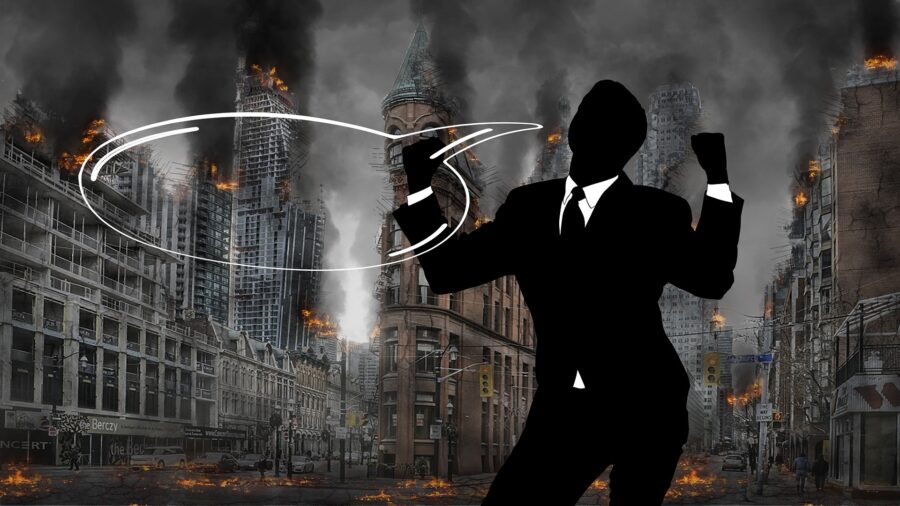
Abandonment can lead to negative beliefs about yourself and your relationships. Challenge these beliefs by looking for evidence that contradicts them. There are tools in the Anxiety & Depression program that help you to tackle this issue.
It’s a self-development cliche these days, but that’s because it’s true. Letting go of anger and resentment towards the people you feel abandoned you, frees you from the psychological shackles you have bound yourself up in.
In most cases, the people that abandoned you (parents, teachers peers) were probably not even consciously aware of the negative effect they were having on you.
There’s also a good chance that you fall into this category. Think about a time when made someone else felt abandoned without realising it. This will make forgiving other people easier if you struggle with it at first.
Remember that healing from abandonment is a journey, and it may take time and effort to fully recover. Be kind and patient with yourself, and seek help if you need it.
[1] https://www.thesap.org.uk/articles-on-jungian-psychology-2/about-analysis-and-therapy/the-shadow/
[3] https://thriveworks.com/blog/abandonment-issues/
However, as the works of Sigmund Freud and Carl Jung illustrate, the subconscious/unconscious perform two different functions. To understand the source of your thoughts, actions and emotions, it is pertinent to distinguish the functional differences.
Consequently, Master Mind Content feels a decisive explanation is required. In doing so, it is easier to identify where a thought is originating from, and more importantly, which voice to listen to.
To keep things simple, Master Mind Content uses the terms below:
Self-ego axis = conscious awareness; the centre of consciousness that makes your decisions
Subconscious programs = habitual patterns of behaviour; sometimes we use the term ‘habitual mind’ when referring to attachments the ego believes you need to get you through the day. These are subconscious programs caused by archetypal projections that have taken “possession” of the ego.
Superconscious = parts of your personality that need to be integrated into conscious awareness.
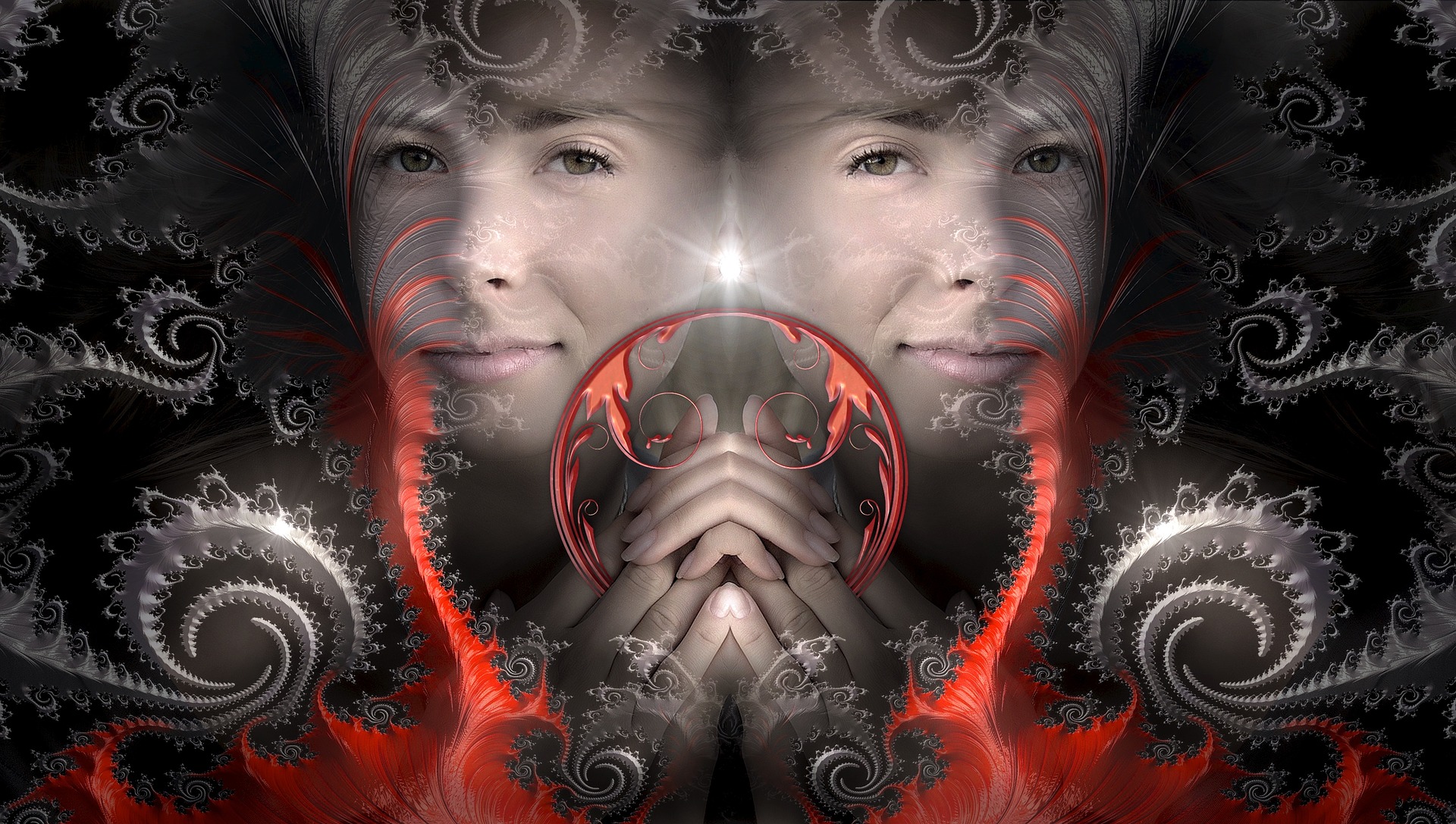
The Self-ego axis is the seat of conscious awareness. It is responsible for your decision-making, surviving and thriving. However, the decisions you make are determined by the aspect of your personality that has the most power; the ego or the Self. [1]
The ego wants you to survive. The Self wants you to thrive.
Subconscious programs are memories the central nervous system stores in your cells. The stored information related to past experiences that your conscious mind deemed would not disrupt your emotional well-being. Subconscious programs are created in one of three ways.
1. You develop a coping mechanism to compensate for an emotional need. Coping mechanisms can then become an addiction, usually a destructive habit, or an oddity such as a quirky character trait
2. An archetypal energy abducts the conscious mind and you experience a moment of madness (or you can become gradually psychotic)
3. An archetypal energy emerges as a complex which develops into a full-blown neurosis; depression, anxiety, OCD, PTSD
The superconscious aligns with Carl Jung’s collective unconscious together with archetypal energies the ego has NOT YET identified with. These opposing energies of the archetypes can, however, appear in the conscious personality. Jung called this the Shadow.
We have chosen to call it the superconscious because it contains the missing aspects of your True Nature that give you the superpowers to excel at life and experience the world from a love-based centre.
“The collective unconscious is the source of our spiritual and psychological nourishment, the material of which our inner lives are made.” [2]
~ Robert Johnson, Ecstasy
It’s important to note that the conscious mind, subconscious and superconscious are intricately linked. The goal of the Essential Self-Development program is to bring the superconscious to the attention of your conscious awareness.
This involves identifying the archetypal qualities that cause problems in your life and integrating the missing qualities into your personality.
In other words, your goal is to upgrade subconscious programs with your innate superpowers.
Let’s take a look at how consciousness becomes manifest, repressed and suppressed.
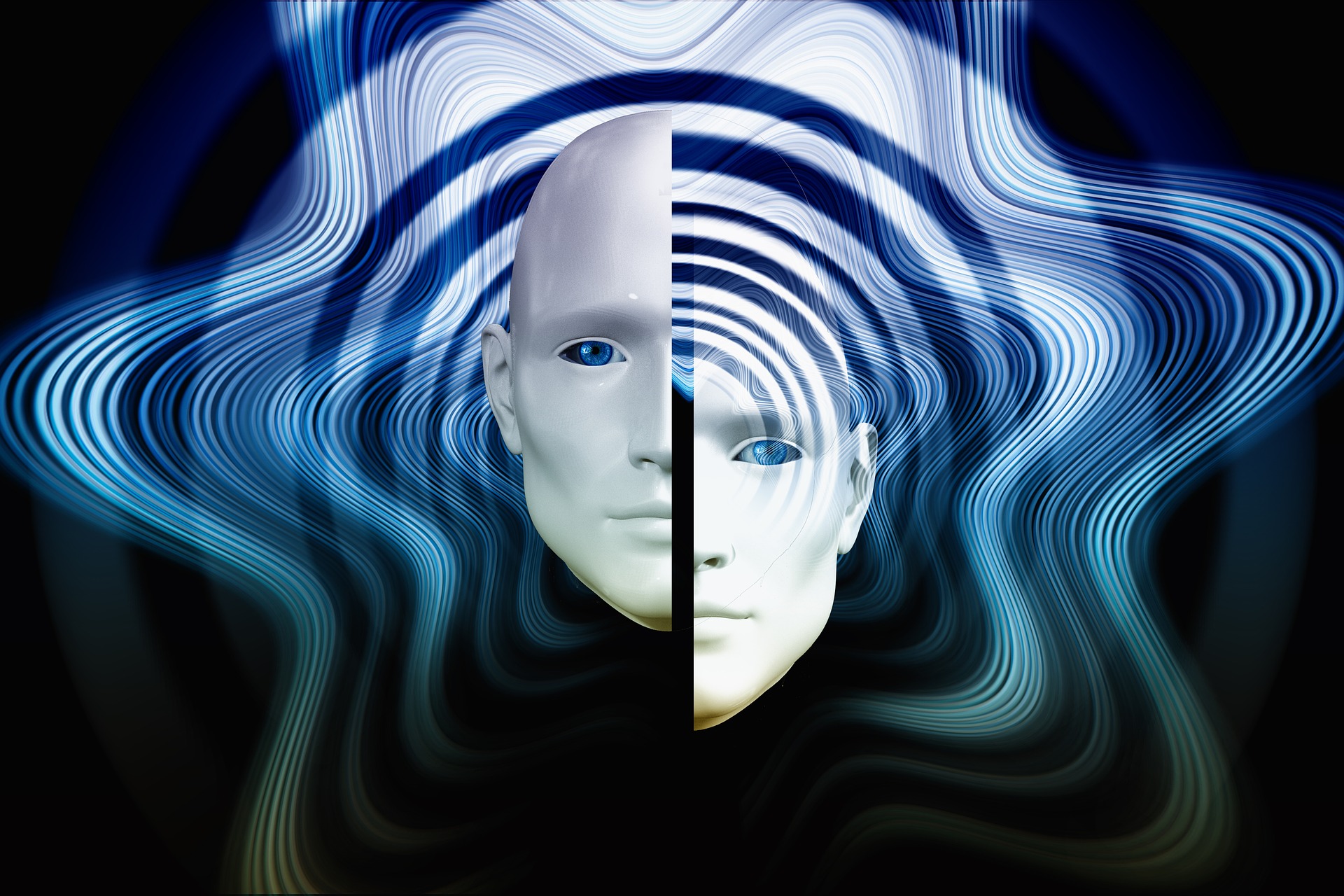
It was thought for many decades that conscious awareness is stored in the brain and that behaviours are determined by genes. The science of the day has shown that both assumptions are incorrect. (Read more in the articles: How The Nervous System Works and The Battle Between Intellect and Instinct.
Neurobiology shows us that emotions are created by the nervous system [3] which appears to coincide with psychologies widely used term, subconscious programs. It may be the case that habitual thoughts are subconscious programs [4].
Other thoughts, however, originate from outside the body, in what we are calling the superconscious. The superconscious aligns with Jung’s collective unconscious which is also called the ‘World of the Archetypes’ in Jungian theory.
Modern researchers in various disciplines of science have given this field of energy names such as morphic resonance [5] and the Holotropic mind [6]. This new way of thinking implies the brain — or conscious mind — is simply aware of thoughts and emotions as they emerge into conscious awareness.
Jung recognised this in the early 20th Century.
“Without a doubt, consciousness originally arises out of the unconscious (subconscious). This is something we forget too often, and therefore we are always attempting to identify the psyche with consciousness, or at least attempting to represent the unconscious as a derivative, or an effect of the conscious.” (Brackets are mind)
~ Carl Jung, Commentary on The Secret of the Golden Flower (1929)
What a crackpot!
I imagine this would have been the general response from the institutionalised thinkers in Jung’s day. Around a century later, scientific research is proving the Swiss psychoanalyst was correct and his detractors were wrong.
Yes, the institutions that dictate belief systems were wrong and have hindered progress in the field of consciousness for a century.
This brings me to the starting point of this content. Why is the terminology used in psychological literature and across “official” websites so confusing?

But if you’re not bothered about “conspiracy theories”, skip to the next section and go to Subconscious Programs v Superconscious: Why Are They Different
Readers who take an active interest in psychology will no doubt be familiar with the term ‘subconscious’. But you will also have read the term ‘unconscious’.
What is the difference between the subconscious and the unconscious? The term is used interchangeably to refer to the same thing — content that is outside conscious awareness.
Both terms are still widely used by laypeople. However, both terms have been ditched by professional psychologists because of the confusion it was causing.
Mental health professionals now use the term ‘non-conscious’. But, in my opinion, the definition of this term doesn’t explain how the mind works either.
Personally, I feel that there should be more clarity that distinguishes between the two functions of the mind. And there are two functions so you can’t use a uniform term to satisfy both functions.
That’s how things get confused.
First of all. Let’s take a look at how mainstream psychology defines the subconscious:
“SUBCONSCIOUS: “Subconscious contains the suppressed ideas and thoughts.” (Source: Psychology Dictionary)
Note how psychology professionals note the subconscious “lies under the conscious level and above the unconscious level.” So psychology professionals acknowledge consciousness has layers. This is important when it comes to understanding your thoughts, actions and emotions.
Also, note how the writer associates suppressed consciousness with the subconscious. Suppression is a conscious act. Repression on the other hand is split-off content you are completely unaware of. Again, this is an important distinction to make.
The Collins dictionary — giving the definition to non-professionals — says that the subconscious influences your behaviour even though you’re not aware of it.
This is partly true. The subconscious does influence your behaviour and you may not realise you are behaving in a particular way. But sometimes you know precisely why you’re doing something (logical thinking, inner knowing). The occasions that you are unaware of are archetypal energies trying to draw unconscious content into conscious awareness.
The APA are non-committal about the function of the subconscious but says it is open to autosuggestion and hypnosis. So on the one hand, they acknowledge it serves a function and can be influenced by our environment, but, on the other hand, the term has been scrapped.
Meanwhile, the definition of the Unconscious is:
The Psychology Dictionary indicates that the unconscious contains content you are not consciously aware of and which is not easily retrievable like the subconscious memories we access every day.
They also imply that unconscious content influences your behaviour via a sequence of buried or repressed memories, emotional conflicts and instinctive desires we are not aware of.
The unconscious, therefore, serves a different function from the subconscious in that it isn’t easily accessible and contains repressed content rather than suppressed content. They are two different sources of energy which we can learn from, namely the Self-ego axis.
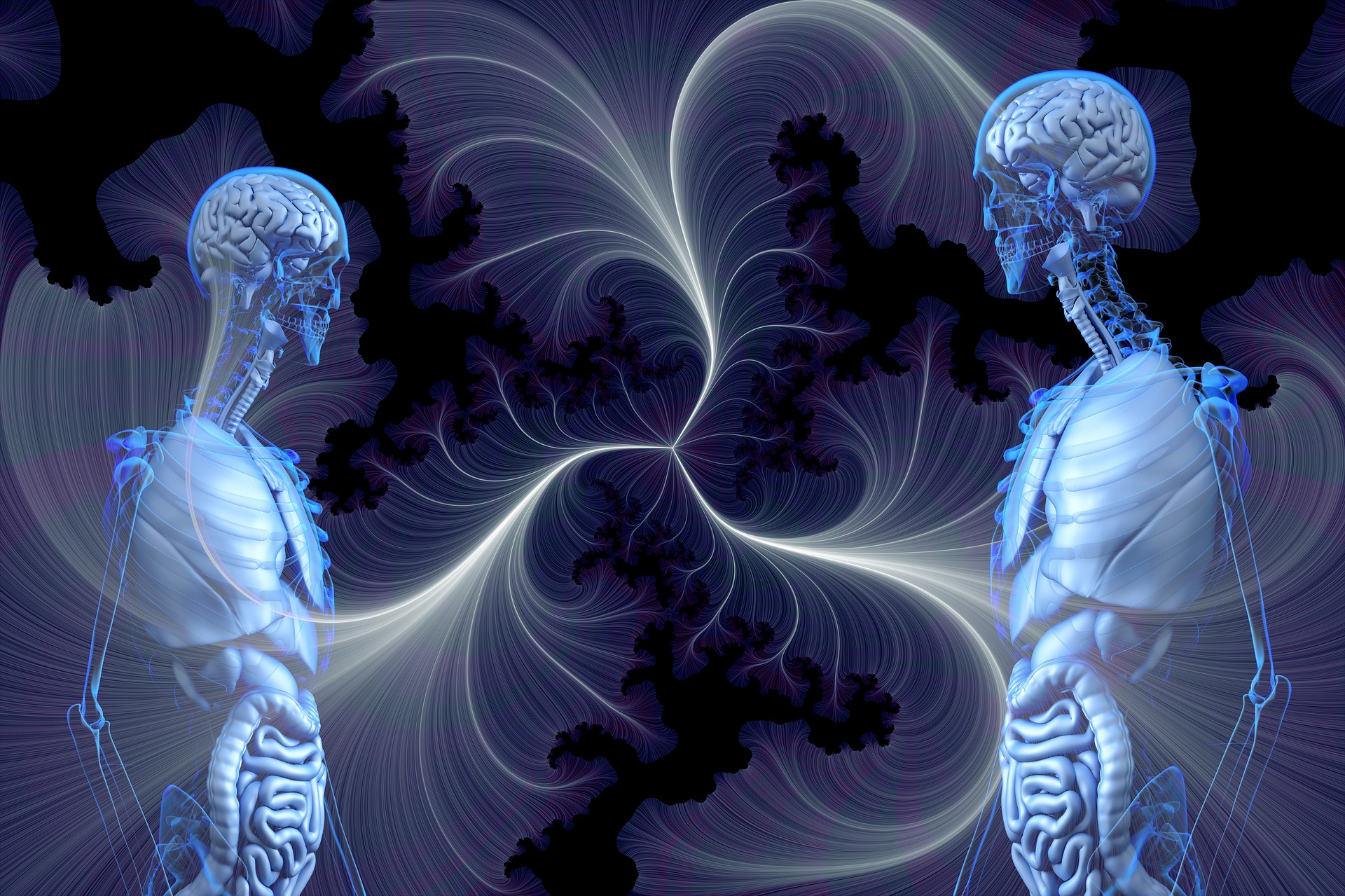
Repressed content is not available to the conscious mind because the information has never been programmed into the central nervous system (the subconscious). Suppressed content is available to the conscious mind but is rejected by the ego if the instinct is not appropriate at that moment.
In my opinion, the subconscious should be recognised individually as separate from the unconscious.
The APA also note that the unconscious is where we store memories, emotional conflicts, wishes and repressed impulses that influence behaviour. However, the institution also explains the term unconscious has been replaced with non-conscious:
1. describing that which is not explicitly in the contents of conscious experience.
2. describing any cognitive process or event that is not available to introspection or report. (Source: American Psychological Association)
Point 1 basically describes the unconscious — content that is outside of conscious awareness. This means either the content has been repressed or you have not been in a situation to express an aspect of consciousness.
Point 2 basically says the same thing as point 1 — unconscious content that is not accessible for the conscious mind to reflect on. That happens when the content has not been part of a conscious experience.
I can see how the term non-conscious relates to the unconscious mind, but it completely eliminates memory retrieval that is accessible to conscious awareness.
For the APA, the subconscious no longer exists but is open to autosuggestion but not memory.
Weird.
We become consciously aware of memories when they are entering into conscious thought. Or as the APA says: “an organism’s awareness of something either internal or external to itself.”
So the “official” term non-conscious is the same as the superconscious we use at Master Mind Content. However, as you will see, the superconscious does influence your behaviour and it does create memories that become stored in your subconscious as a program.
The subconscious can be programmed by autosuggestion and hypnosis from the external world. As Joseph Goebbels said: “If you tell a lie big enough and keep repeating it, people will eventually come to believe it.”
However, you should be upgrading your subconscious programs from internal content. That’s where the treasure is buried. Your True Nature in its fullness.
Knowing the difference between subconscious programs and the superconscious will help you to overcome habits and make faster progress in your self-healing and self-development endeavours.
In a nutshell:
Subconscious programs are the habits that keep you trapped in cyclical patterns of behaviour. This is the information programmed in the central nervous system which the ego identifies with and responds to.
They are concrete beliefs (which can often be limiting beliefs), attitudes, character traits, habitual thoughts, emotions and attachments. Subconscious programs pilot most of your decision-making and thus have the biggest influence on your experience of life.
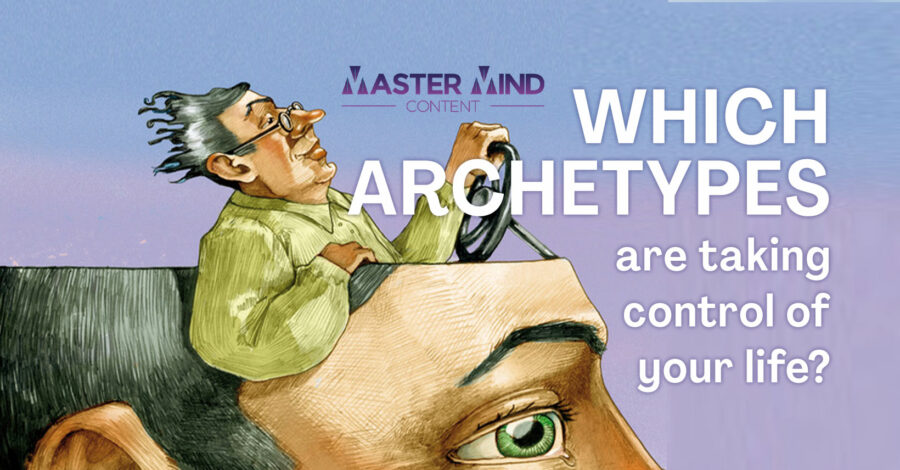
Whilst some subconscious programs are critical for our survival, they can also make us one-sided. Ultimately, subconscious programs cause an imbalance in the psyche.
As a consequence of one-sidedness, the content stored in your subconscious programs generates the same energies which ultimately manifest as the same behaviours, thoughts, emotions and experiences.
When the personality is one-sided, “every impulse towards adaptation to the outer world tends to be repressed and to sink into the unconscious.” [7] The individual must not withdraw from the world into the unconscious but find a way to adapt to his environment.
The superconscious attempts to find an adaptable state of being which will bring about order and harmony between the Self and the ego. Unlived or ignored archetypes project themselves onto the conscious personality and take possession of the ego.
Archetypal energies exist in both the subconscious and the superconscious. This is because energy has opposing forces. When consciousness becomes split off, one aspect of the archetype is lived and the other is unlived. This is why in mythology the dead is associated with the Underworld.
“Now it is an axiom of psychology that when a part of the psyche is split off from consciousness it is only apparently inactivated; in actual fact it brings about a possession of the personality, with the result that the individual’s aims are falsified in the interests of the split-off part.” [8]
~ Carl Jung: CW9 Part 1, The Archetypes and the Collective Unconscious
Archetypal energies in the subconscious are aspects of your personality that have been expressed. This side of the archetype is identified by the ego and is accepted as part of the personality.
The problem is that the ego doesn’t know good from bad. It only knows what protects your emotional survival in the external world. For example, abused children that only have bad experiences, develop the worst side of human nature.
This side of the personality is integrated into the conscious mind and the ignored aspect is pushed into the superconscious. However, the archetypal energies in the superconscious still emerge into conscious awareness.

When the ego is strong, you will be able to suppress archetypal energies and deny them expression. However, when the ego is weak (as it is in children), the archetypal energy emerges as an illusion; a destructive behaviour or misleading attitude that will eventually cause you to trip up and realise you are wrong.
But only if you are able to admit to your shortcomings. If you choose to ignore them, you are more prone to one-sidedness.
“Conscious capacity for one-sidedness is a sign of the highest culture. But involuntary one-sidedness i.e. inability to be anything but one-sided, is a sign of barbarism…For the Barbarian, this tendency to fall victim to one-sidedness in one way or another, thereby losing sight of his whole personality, is a great and constant danger.” [9]
~ Carl Jung, CW6, Psychological Types
If you enjoyed the experience prompted by the superconscious, you’re more likely to do it again. The more often you repeat something, the split-off aspect of consciousness takes possession of the ego and leans towards destructive behaviours and unhealthy habits.
This is why you have some subconscious programs that help you to thrive and grow whilst others help you to survive. Subconscious programs that create problems in your life are designed for emotional survival and keep you rooted in a victim state.
But if you look at your survival mechanisms and recognise why they are there you will find the remedy in the opposing energy. Integrate the archetypal quality into the conscious mind and you are equipped to thrive.
It’s time to break free.
To understand which problems the superconscious is causing, you need to be able observe archetypal energies. They show up in patterns of behaviour, emotions, attitudes, beliefs, personality traits, complexes and the experiences you have in life.
I’ve featured the Self-ego axis in an in-depth article. If you haven’t read it already, or if you don’t feel as though you understand this concept, revisit the content here — Self-ego axis.
But to recap, the conscious mind has two attitudes; introversion and extroversion.

The Self is the introverted aspect of consciousness. It has access to the superconscious and helps to bring archetypal energies into conscious awareness.
To excel in life, you need to be Self-directed but also develop the ego with a sufficient number of archetypal qualities so that you can manage yourself appropriately in the external world. The more archetypal energies you integrate into the conscious personality, the more you develop human superpowers; heightened intuition/psychic tendencies/inner knowing.
“For certain reasons mentioned there I call this centre the “self,” which should be understood as the totality of the psyche. The self is not only the centre, but also the whole circumference which embraces both conscious and unconscious; it is the centre of this totality, just as the ego is the centre of consciousness.” [10]
~ Carl Jung, CW 12, Psychology and Alchemy
The ego is the extroverted aspect of consciousness. If your attitude towards life is directed outwards and you look for comfort in your external environment, the ego becomes overinflated.
If you become too one-sided, you become disconnected from the Self and encounter more conflicts in your life. You need to look inwards to integrate the missing aspects of your personality and develop the ego.
Thought-Provoking Quote
“It is a fact that consciousness heightened by a necessary one-sidedness gets so far out of touch with the archetypes that a breakdown follows. Long before the actual catastrophe, the signs of error announce themselves as absence of instinct, nervousness, disorientation, and entanglement in impossible situations and problems.” [11]
~ Carl Jung, Commentary on The Secret of the Golden Flower (1929)
Any type of fixation in the material world is a sign of an overinflated ego. Excessive behaviours, beliefs or attitudes towards one thing develop a one-sided nature that is detrimental to the whole personality.
To compensate, the superconscious creates a conflict. You will find an impression of an archetype in every challenge you face in life, in attachments, an oddity, the voice in your head that says “I know I shouldn’t do this” and the ego says “but” and does it anyway.
The Self can also take possession of the ego in an instant and send you into a moment of madness. These are the times when you act ‘out of character’ and say, ‘I don’t know what I was thinking’ or ‘I don’t know what came over me.’

If you have a complex, neurotic behaviour or encounter situations that are problematic — arguments, conflicts, frustration, restlessness — you need to observe these traits and determine which archetypal quality needs integrating into conscious awareness in order to develop the ego.
By understanding the purpose of an archetypal quality emerging from the superconscious, you free yourself from the life-impulses, erratic behaviours, uncontrollable emotions and periods of despair or depression etc.
Through self-observation, you will be able to determine that your behaviour, personality traits, impulses, attachments, attitudes and emotions begin to reflect repressed consciousness.
Thought-Provoking Quote
“One of the most important forms is the phenomenon of possession: some content, an idea or a part of the personality, obtains mastery of the individual for one reason or another. The contents which thus take possession appear as peculiar convictions, idiosyncrasies, stubborn plans, and so forth. As a rule, they are not open to correction. One has to be an especially good friend of the possessed person and willing to put up with almost anything if one is to attempt to deal with such a condition. I am not prepared to lay down any hard and fast line of demarcation between possession and paranoia. Possession can be formulated as identity of the ego-personality with a complex.” [12]
~ Carl Jung, CW9 Part 1, The Archetypes and the Collective Unconscious
The attachments you developed to help fill the void left by fragmented consciousness may have started out as a coping mechanism but later became an addiction or a complex.
However, when you start looking inward and observe your thoughts, actions and behaviours, you will begin to notice a psychic phenomenon that appears to have a loose connection with your conscious personality. [13]
This is when you start to come into conscious contact with the Shadow together with the Anima (for men) or the Animus (for women).
Subconscious programs reflect your personal experiences. They are a record of your life, filed and coded into your cells. These “memories” surface as thoughts and feelings which influence your actions.
Subconscious programs are what Freud called the preconscious and Jung associated with the personal unconscious.
Thought-Provoking Quote
“That which is latent [not yet fully formed], and only unconscious in the descriptive and not in the dynamic sense, we call preconscious; the term unconscious we reserve for the dynamically unconscious repressed, so that we now have three terms, conscious, preconscious, and unconscious, which are no longer purely descriptive in sense.” [brackets are mine]
~ Sigmund Freud, The Ego and the Id [14]
Sitting just below the surface of the conscious mind, subconscious programs are easily retrieved. The information stored in these files creates the thoughts that appear in your mind, the way you feel, how you act and how you behave.
How you experience life is predominantly pre-determined by subconscious programs. You can also call this the habitual mind. A store of habits and biases. The information stored in your subconscious is the building blocks of your personality and how you experience life.
Like Freud, Jung noted that contents within the personal unconscious — although they drive behaviour — remain unconscious.
Thought-Provoking Quote
“We have to distinguish in the unconscious a layer which we may call the personal unconscious. The materials contained in this layer are of a personal nature in so far as they have the character partly of acquisitions derived from the individuals life and partly of psychological factors which could just as well be conscious. It can medically be understood that incompatible psychological elements are liable to repression and therefore become unconscious.” ~ Carl Jung, CW7 The Effects of The Unconscious Upon Consciousness [15]

The Superconscious, on the other hand, is a system which stores the entirety of human consciousness. The Superconscious is the equivalent of Jung’s collective unconscious and contains aspects of your personality that are not integrated into your personality because they have either been ignored, forgotten or unidentified.
We can therefore say that the personal unconscious contains archetypal energies that are split-off and cause an imbalance. An imbalance causes inflation, emotional disturbances, complexes, neuroses and disease.
Content stored within subconscious programs is, therefore, identifiable by observing patterns of thoughts, actions and behaviours. You will be able to recognise archetypal patterns of energy using the archetypes tool.
However, the other function of the “unconscious” — the Superconscious — contains aspects of your personality that you do not have any personal experience of.
These are human qualities, wisdom, beliefs, attitudes, thoughts, emotions and behaviours that are to be recognised, learned and integrated into conscious awareness.
Thought-Provoking Quote
“The collective unconscious is a part of the psyche which can be negatively distinguished from a personal unconscious by the fact that it does not, like the latter, owe its existence to personal experience and consequently is not a personal acquisition. While the personal unconscious is made up essentially of contents which have at one time been conscious but which have disappeared from consciousness through having been forgotten or repressed, the contents of the collective unconscious have never been in consciousness, and therefore have never been individually acquired, but owe their existence exclusively to heredity. Whereas the personal unconscious consists for the most part of complexes, the content of the collective unconscious is made up essentially of archetypes.”
~ Carl Jung: CW9 Part 1, The Archetypes and the Collective Unconscious [16]
For Jung’s concept to make more sense it is important to understand the nature of repression and how repression might be caused. You can read about that in more detail in the article, How The Nervous System Works, but for now I will briefly state that:
Repression is deemed to be the unconscious blocking of consciousness the brain deploys as a “defense mechanism” to avoid processing distressing thoughts. Repression causes energy to “split-off”. [17]
But taking this into account, we also have to determine how the brain does this. Psychobiology shows us that we absorb information from our environment that fires a neurone and a neurotransmitter.
New experiences trigger a process called neurogenesis. This creates a synapse which stores information. Biology shows us that memories are built on pre-existing synapses. [18]
Thought-Provoking Quote
“Forming memories doesn’t require new synapses (let alone new branches of neurons); it requires the strengthening of pre-existing synapses.”
~ Robert Sapolsky, Behave: The Biology of Humans at Our Best and Worst [19]
That means that a synapse is formed every time we take in new information. The more synapses built on top of each other gives that aspect of conscious awareness more strength. This is how habits are formed.
But how are synapses built?
They communicate with each other via neurotransmitters that are released in the pre-synaptic gap. Neurotransmitters are also called ‘chemical messengers’ because they carry information.
However, neurotransmitters are coded for by genes. [20] And there are multiple transcription factors in a cell, each constituting a particular set of information. [21]
If the information carried by a neurotransmitter waiting at the pre-synaptic gap is not compatible with existing information stored in the next synapse, the receptor cell denies access.
This function within the nervous system could well be the cause of repressed emotions that fall outside conscious awareness and remain in the Superconscious.
However, let’s not forget that at one time, the aspect of consciousness was split off and is stored somewhere in a cell. The other part of your personality that is not fully formed but is recognised by the conscious mind. A subconscious program.
This is why you have to re-member dismembered content. A subconscious program which is not fully formed can only become fully formed when the archetypal energies in the Superconscious are reunited with the split-off archetypal energies in the personal unconscious.
You can do this by listening to the Self. The Self has access to both the Superconscious, the subconscious and the conscious mind.
Subconscious programs can only be updated if you become consciously aware of split-off content in the Superconscious and changes your beliefs, perceptions, attitudes and actions.
This is why the Self — bringing in archetypal qualities — has to have autonomy over the ego. In doing so, you upgrade the subconscious programs that the ego responds to and thus there is balance and harmony within the self-ego axis.
Thought-Provoking Quote
“The archetype is, so to speak, an “eternal” presence, and the only question is whether it is perceived by the conscious mind or not.”
~ Carl Jung, CW 12, Psychology and Alchemy [22]
If you neglect to develop the ego to cope with your environment, you basically stunt your growth and encounter more conflict and challenges in your life.
The Superconscious stores valuable parts of your personality that you need to integrate in order to grow, succeed and live a happy and fulfilling life.
When you access missing parts of your Superconscious and integrate them into the conscious mind, you are better equipped to cope with your environment. You enjoy more success, feel better and experience more moments of contentment.
Thought-Provoking Quote
“Sometimes these hidden personalities are embarrassing or violent, and we are humiliated when they show themselves. At other times, we wake up to strengths and find qualities within ourselves that we never knew were there. We draw on hidden resources and do things we normally could not have done, say something more clear and intelligent than we’ve ever been able to say before, expressed wisdom we did not know we had, show a generosity or understanding of which we never knew we were capable. In each case there is a startled reaction: “I am a different person than I thought I was. I have qualities — both positive and negative — that I didn’t know we are part of my definition.”
~ Robert Johnson, Inner Work [23]
The goal of the Essential Self-Development Program is to identify the missing aspects of your personality and integrate them into your conscious personality. What you’re essentially doing is upgrading your subconscious programs.
To upgrade subconscious programs you have to integrate the missing aspects of your personality that reside in the Superconscious. This brings the fragmented aspects of your personality into union. Bringing all 12 archetypes into union helps you to achieve wholeness/health.
So how do you identify which aspects of your personality are missing?
There are several ways:
Symbols are the language in which the unconscious communicates to us. Archetypal patterns, complexes, instincts and neuroses are another way to understand this language by using the archetypes tool.
It’s also important to understand how the Self-ego axis works. This enables you to assess and determine, which thoughts, drives and motivations are subconscious programs the ego responds to and which thoughts are instinctive energies surfacing from the Superconscious.
In order to find balance, you must develop the whole personality. Thus you have the choice to incorporate the superconscious or allow archetypal energies to possess the ego with some kind of neurotic behaviour and chaotic experiences.
Thought-Provoking Quote
“But if we are able to see our own shadow and can bear knowing about it, then a small part of the problem has already been solved: we have at least bought up the personal unconscious. The shadow is a living part of the personality and therefore wants to live with it in some form. It cannot be argued our existence of rationalisation into harmlessness. This problem is exceedingly difficult, because it not only challenges the whole man, but reminds him at the same time of his helplessness and ineffectuality.”
~ Carl Jung, CW9 Part 1, The Archetypes and the Collective Unconscious [24]
If you ask why you are performing a certain action, or why you consistently repeat the same experiences (i.e self-sabotage), the superconscious gives you the answers — typically in symbols in dreams but also through events in your life or through a gradual process of self-realisation.
This is why understanding the esoteric meaning of symbols speeds up the self-development process.
The ultimate goal is to find a balance between masculine and feminine principles and dedicate an adequate amount of time to introspection and extraversion. This creates harmony between the Self-ego axis.
Balancing archetypal energies and developing the whole personality is far easier with the archetypes tool.
Thought-Provoking Quote
“The archetype—let us never forget this—is a psychic organ present in all of us. A bad explanation means a correspondingly bad attitude to this organ, which may thus be injured. But the ultimate sufferer is the bad interpreter himself. Hence the “explanation” should always be such that the functional significance of the archetype remains unimpaired, so that an adequate and meaningful connection between the conscious mind and the archetypes is assured. For the archetype is an element of our psychic structure and thus a vital and necessary component in our psychic economy.”
~ Carl Jung, CW9 Part 1, The Archetypes and the Collective Unconscious [25]
[1] Edward Edinger, Ego and Archetype (1992)
[2] Robert Johnson, Ecstasy, Kindle Loc 107
[5] Rupert Sheldrake, The Presence of the Past (1988)
[6] Stanislav Grof, The Holotropic Universe (1993)
[7] Carl Jung, CW6, Psychological Types, p.208 (1923)
[8] Carl Jung, CW9 Part 1, The Archetypes and the Collective Unconscious, 2nd ed, transl. R. F. C. Hull, para 277 (1968)
[9] Carl Jung, CW6, Psychological Types, p.256 (1923)
[10] Carl Jung, CW 12, Psychology and Alchemy, para 44, p.41 (1968)
[11] Carl Jung, Commentary on The Secret of the Golden Flower (1929)
[12] Carl Jung: CW9 Part 1, The Archetypes and the Collective Unconscious, 2nd ed, transl. R. F. C. Hull, para 220 (1968)
[13] Carl Jung, CW 12, Psychology and Alchemy, p.44, para 48 (1968)
[14] Sigmund Freud, The Ego and the Id, p.6 Kindle Loc 78 (1923)
[15] Carl Jung, CW7 The Effects of The Unconscious Upon Consciousness, p.135, para 218 (1928)
[16] Carl Jung: CW9 Part 1, The Archetypes and the Collective Unconscious, 2nd edition, para 88 (1968)
[17] Sigmund Freud, The Ego and the Id, p.17 Kindle Loc 232 (1923)
[18] Robert Sapolsky, Behave: The Biology of Humans at Our Best and Worst, p.159 (2017)
[19] Ibid, p.159
[20] Rupert Sheldrake, The Presence of the Past. p.255, (1988)
[21] Ibid, p.259
[22] Carl Jung, CW 12, Psychology and Alchemy, para 329, (1968)
[23] Robert Johnson, Inner Work
[24] Carl Jung, CW9 Part 1, The Archetypes and the Collective Unconscious, 2nd ed, transl. R. F. C. Hull, para 44, (1968)
[25] Carl Jung, CW9 Part 1, The Archetypes and the Collective Unconscious, 2nd ed, transl. R. F. C. Hull, para 271, (1968)